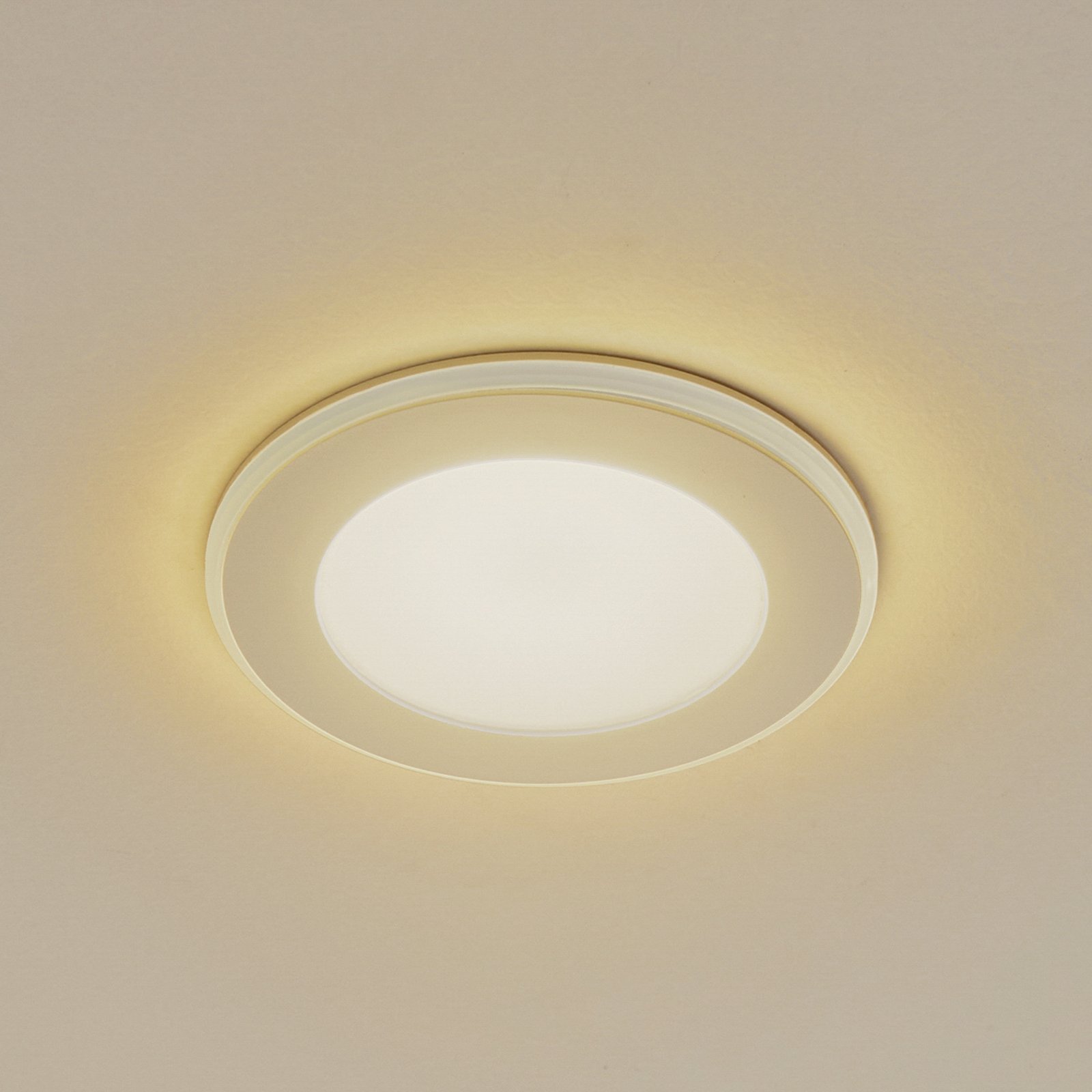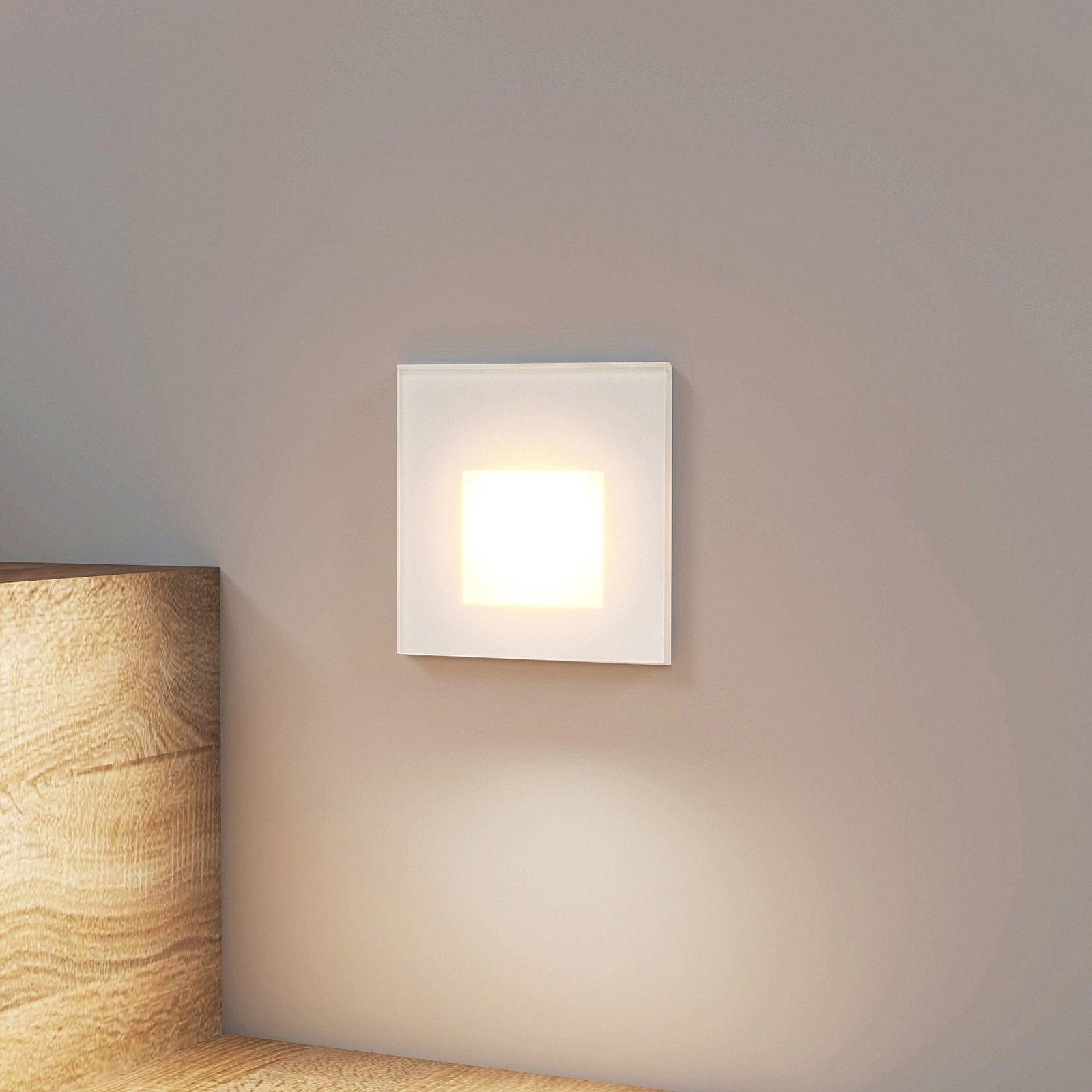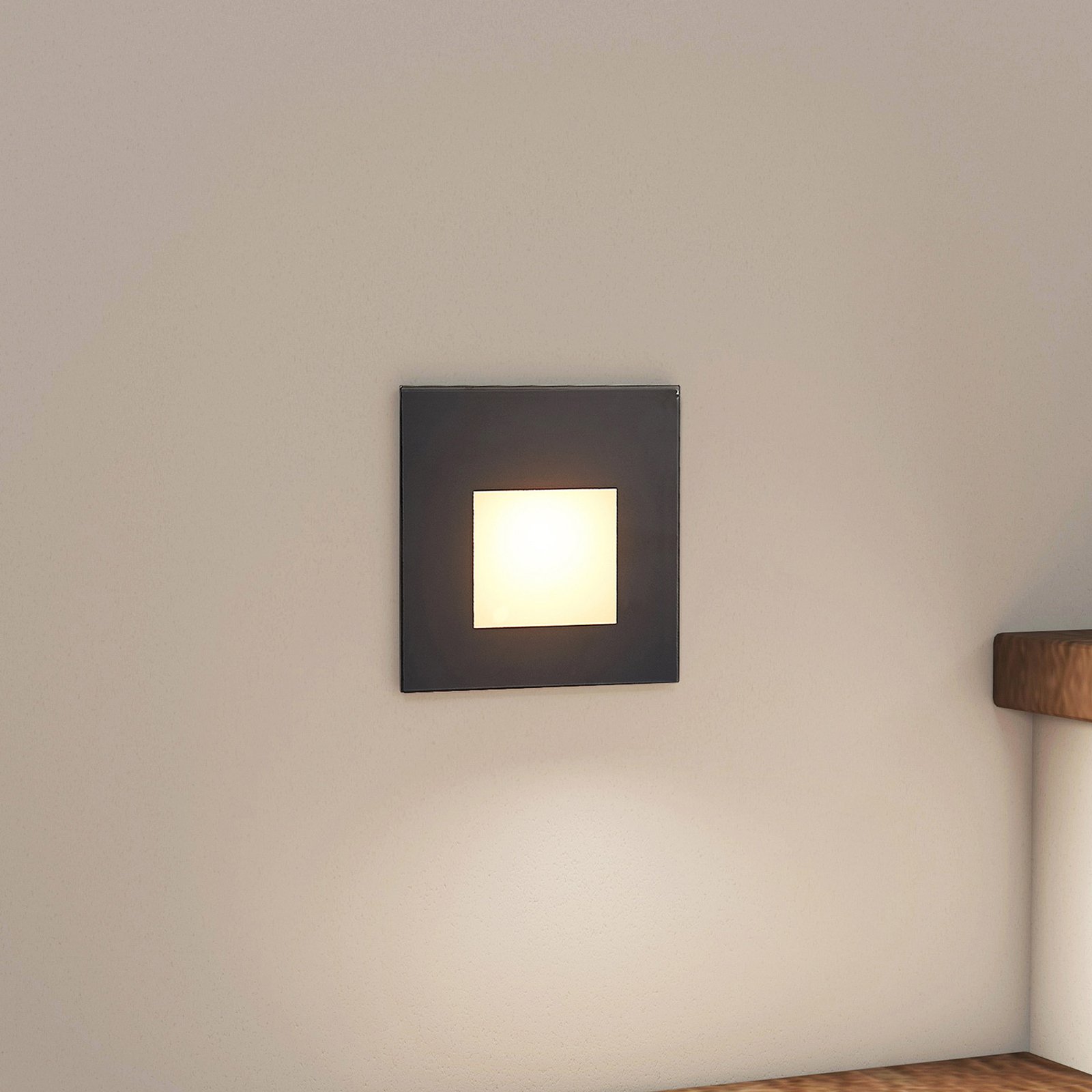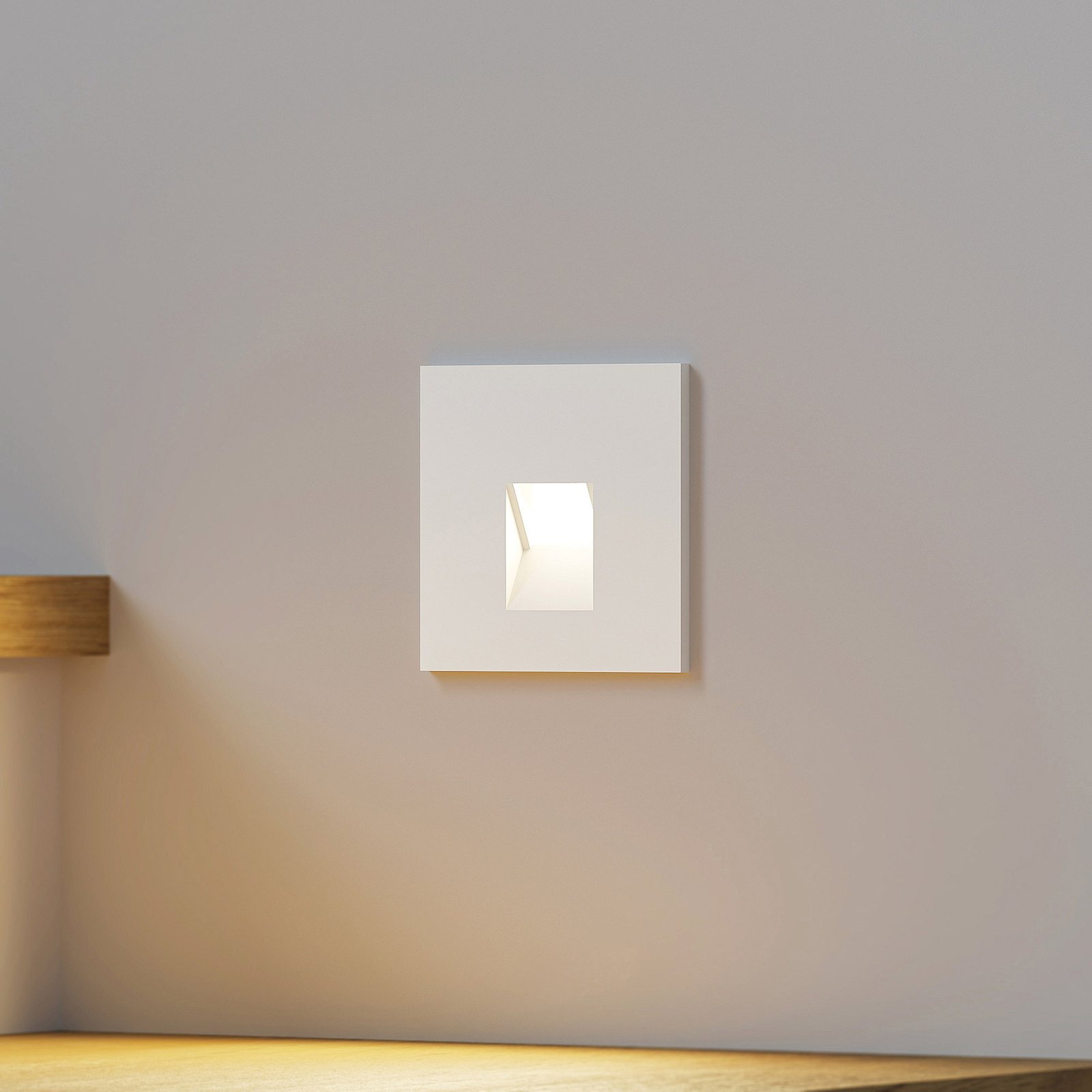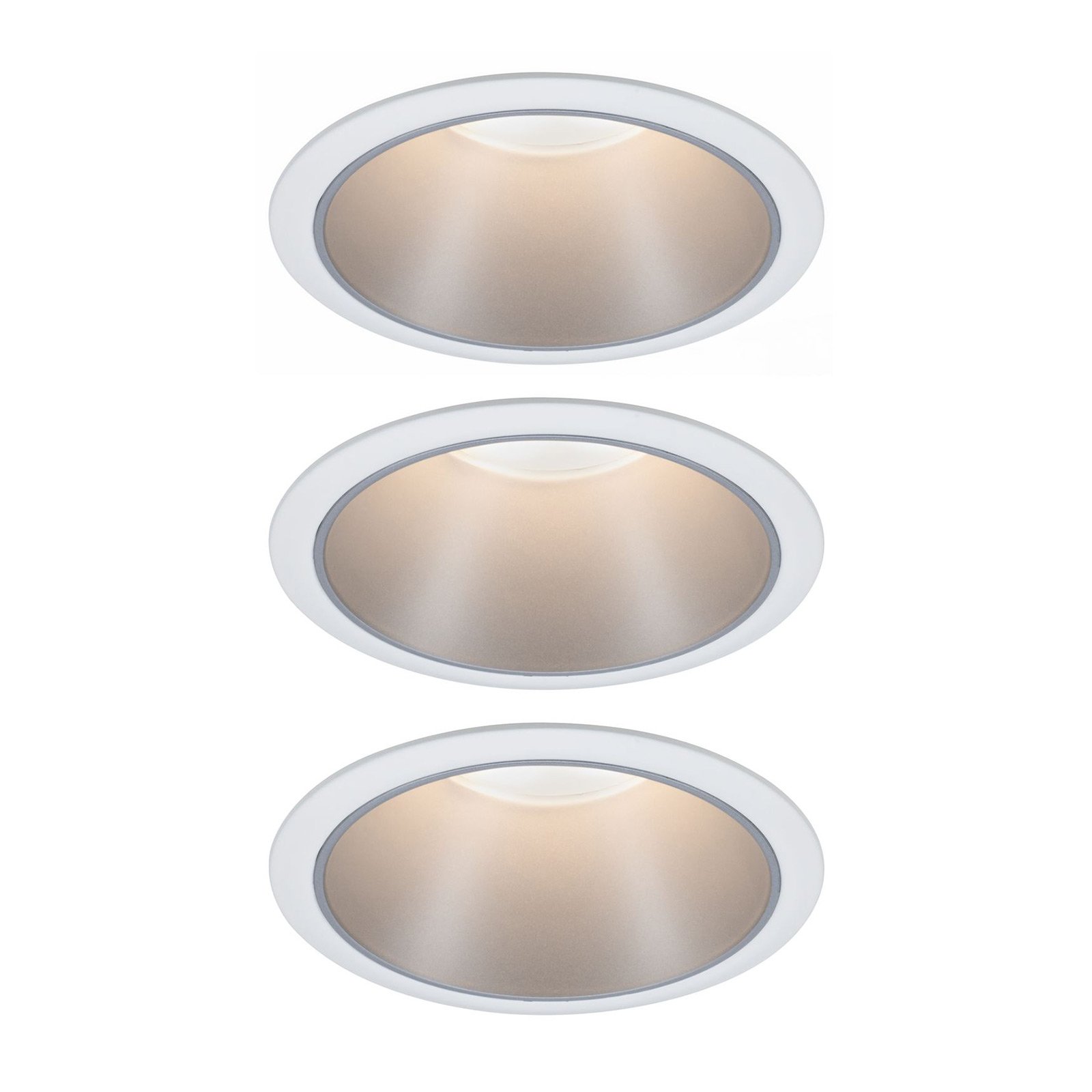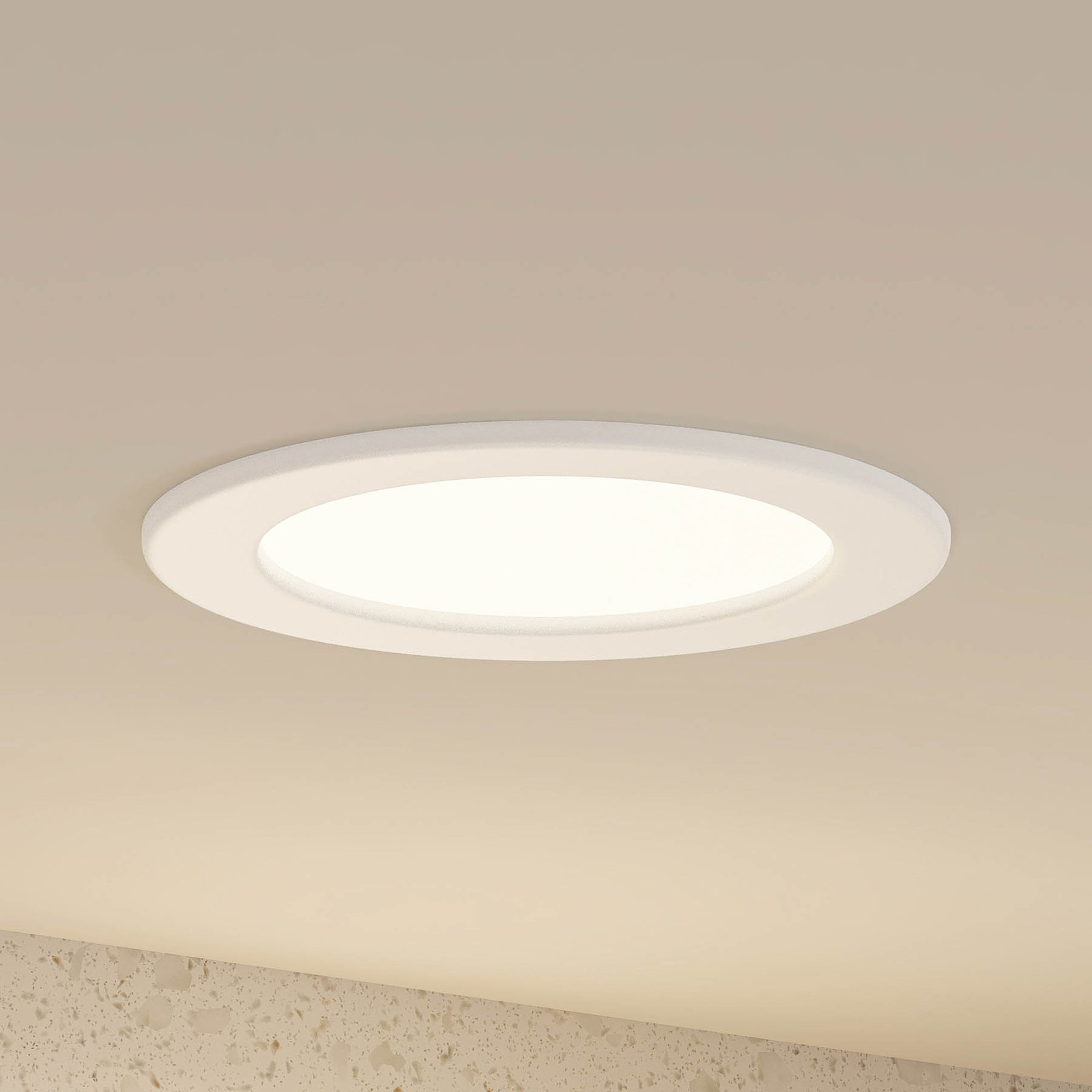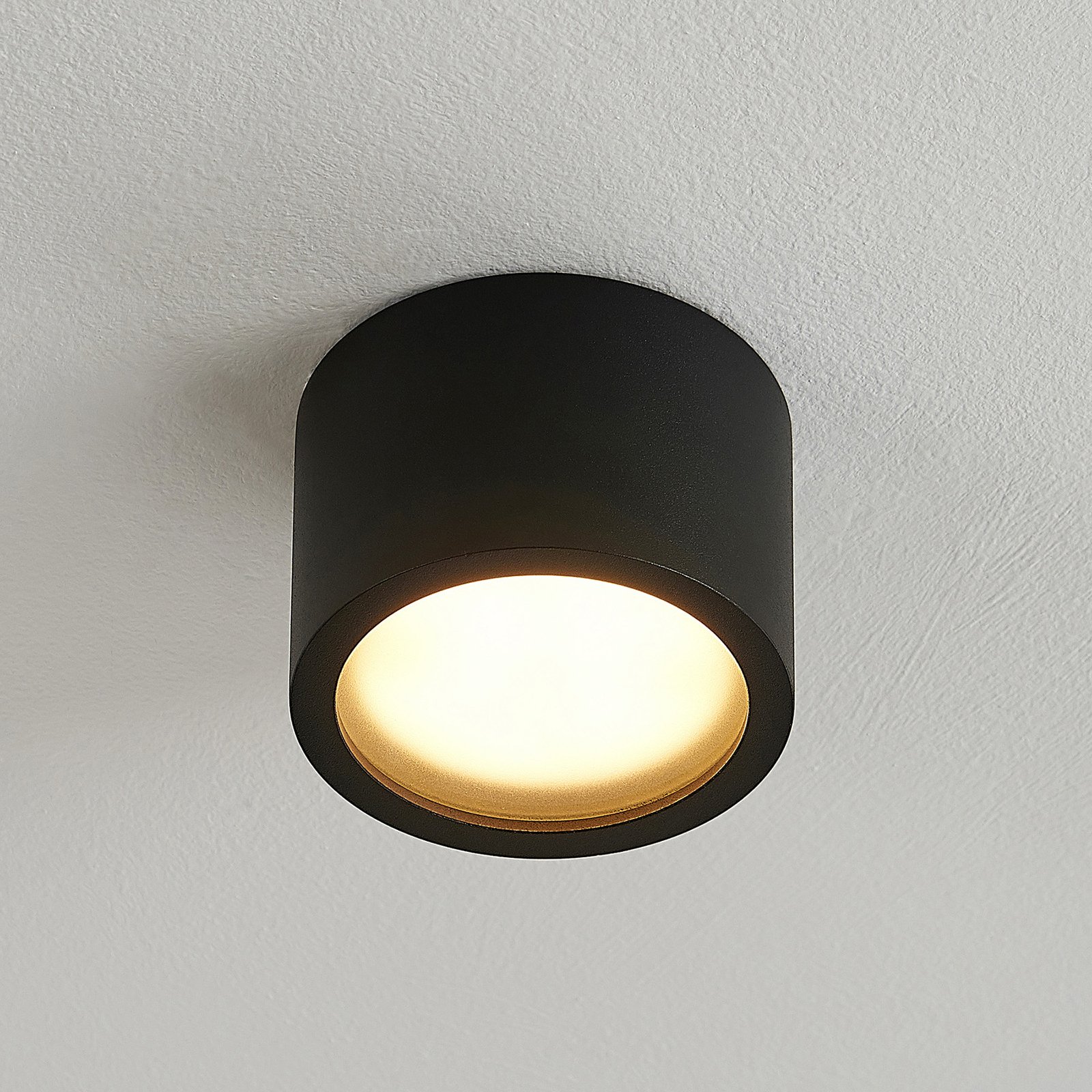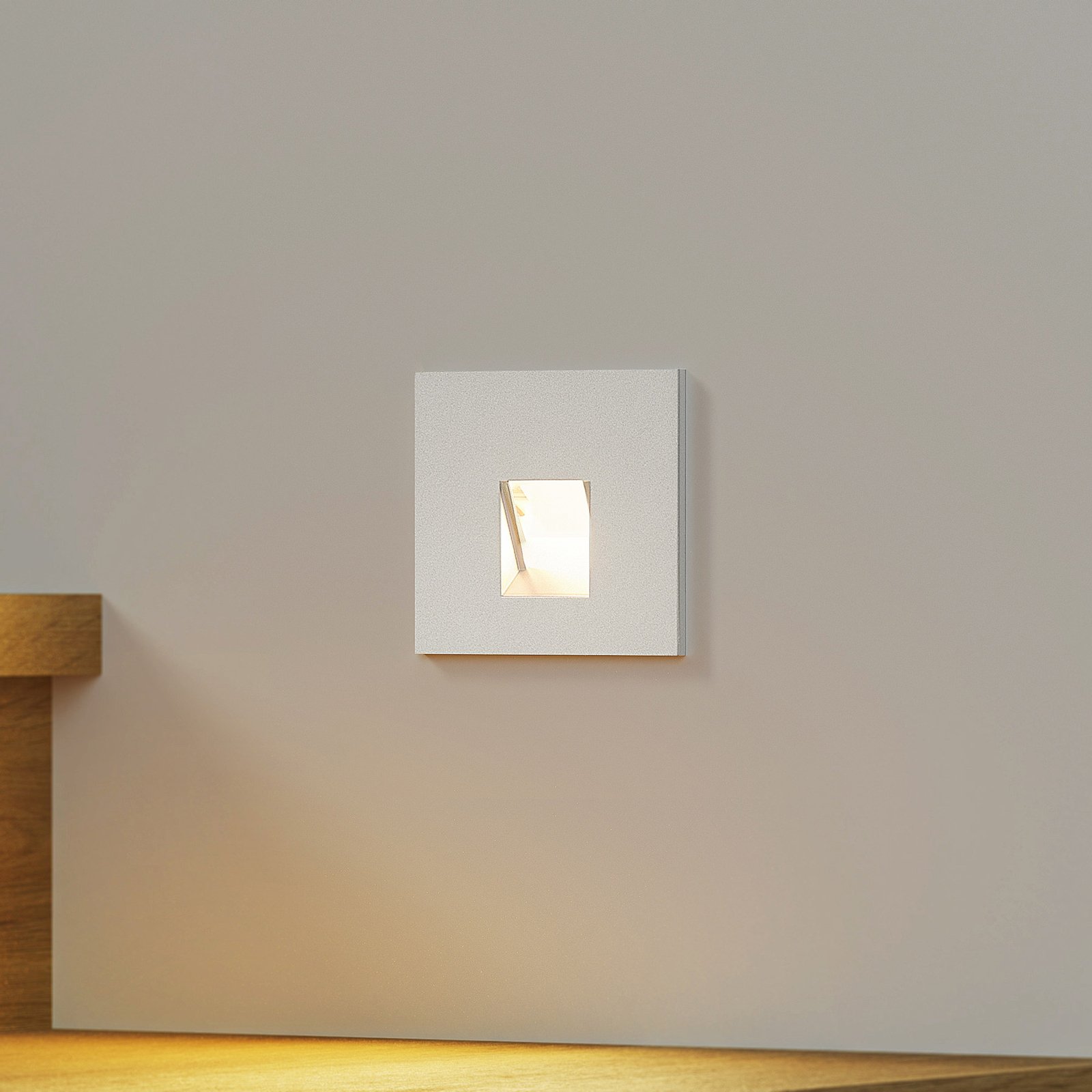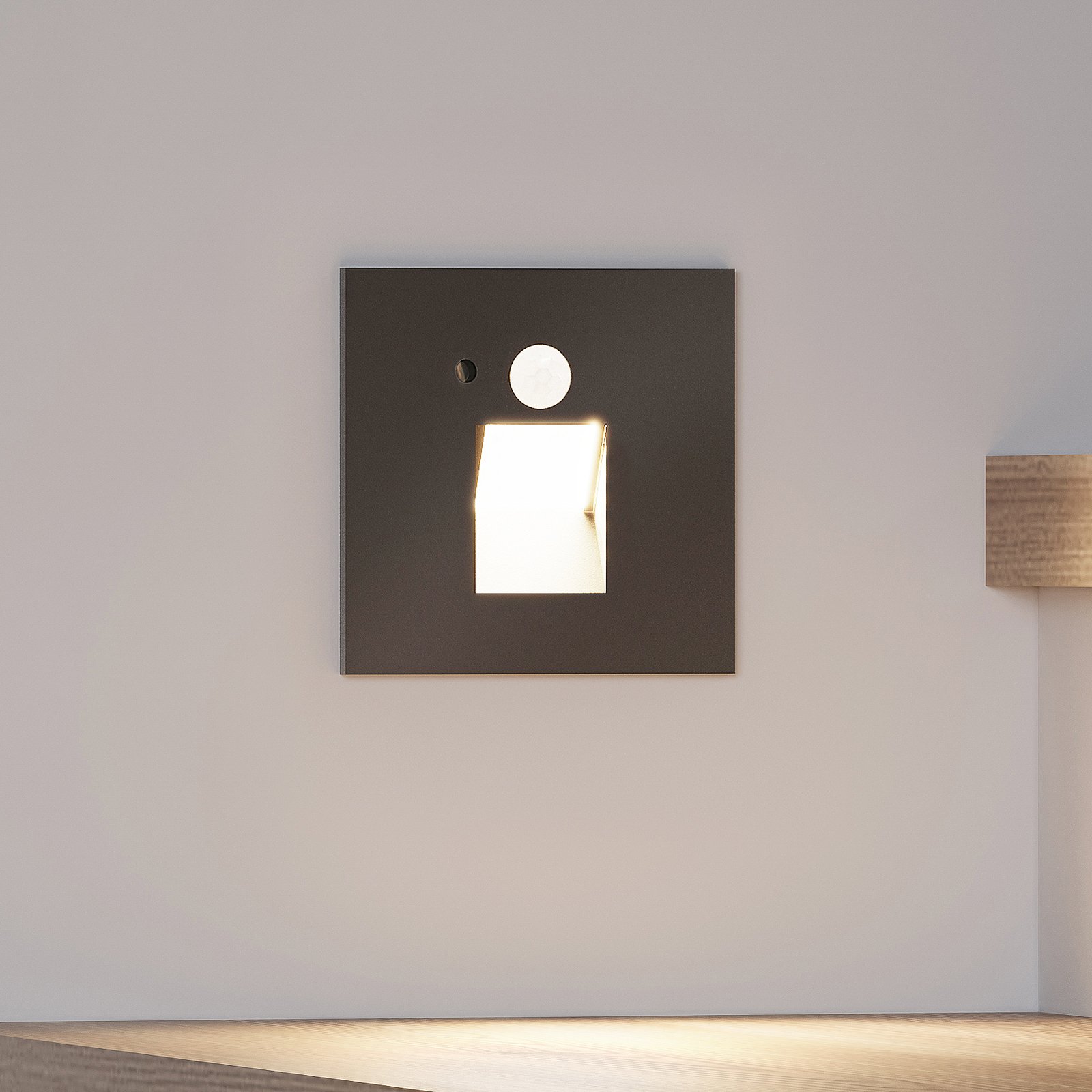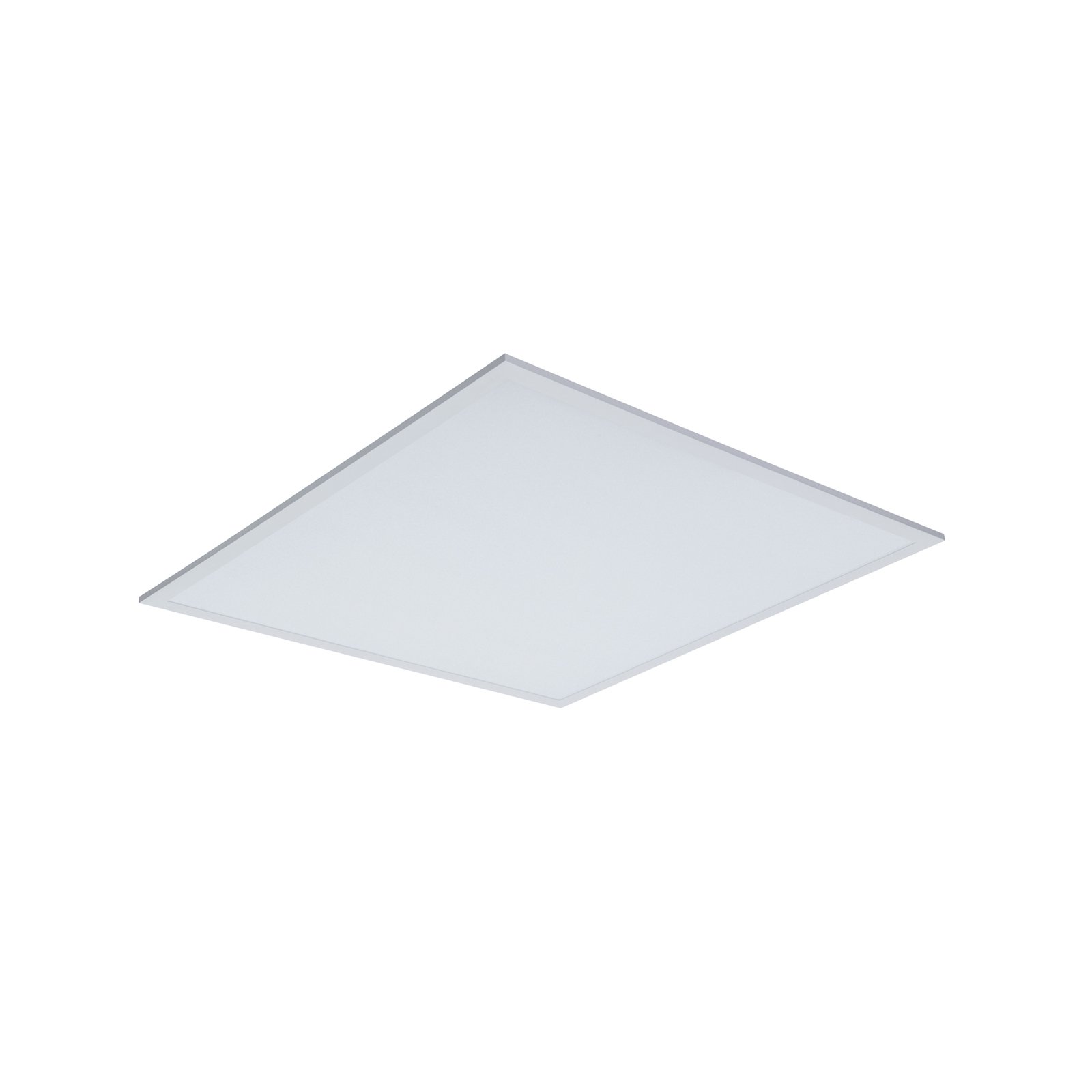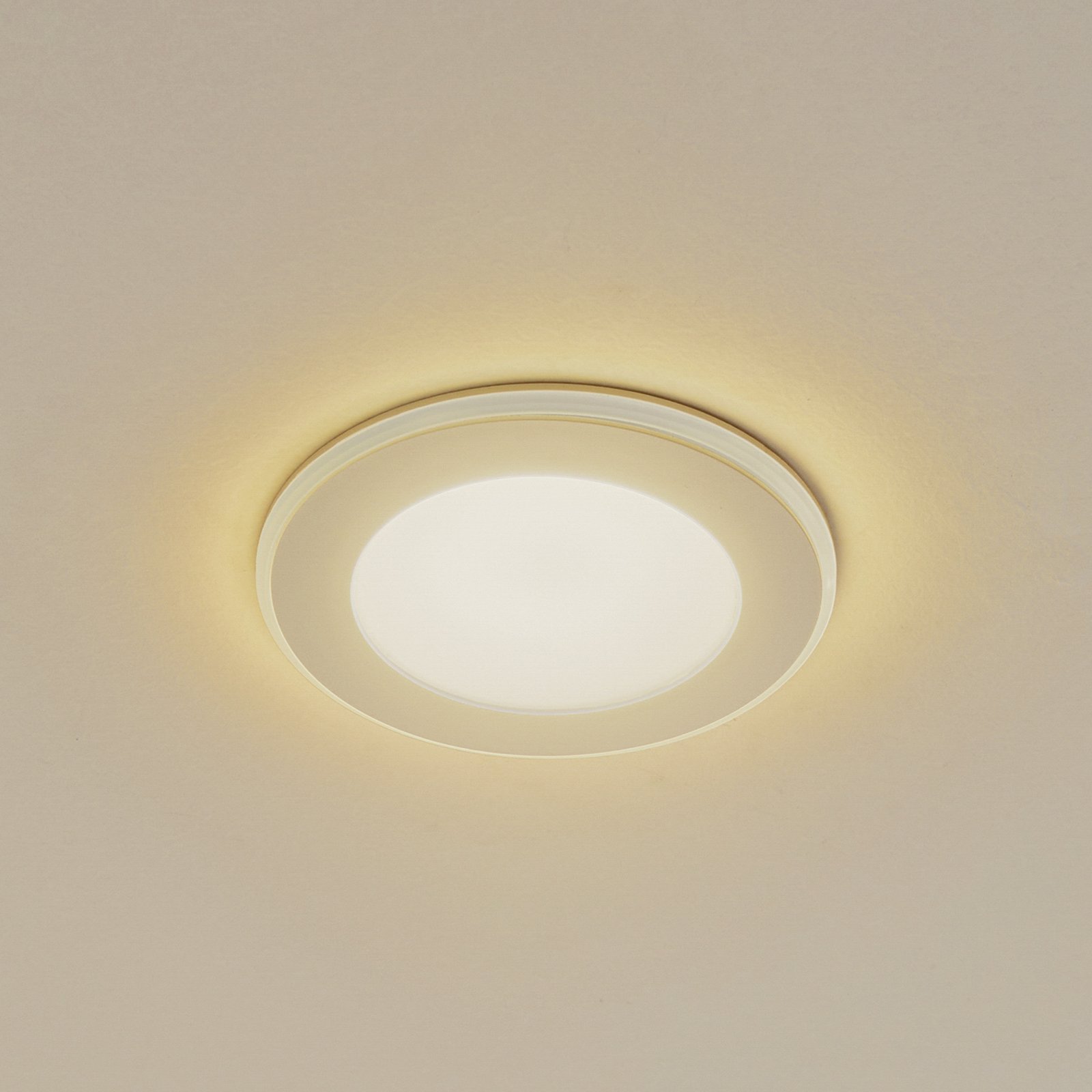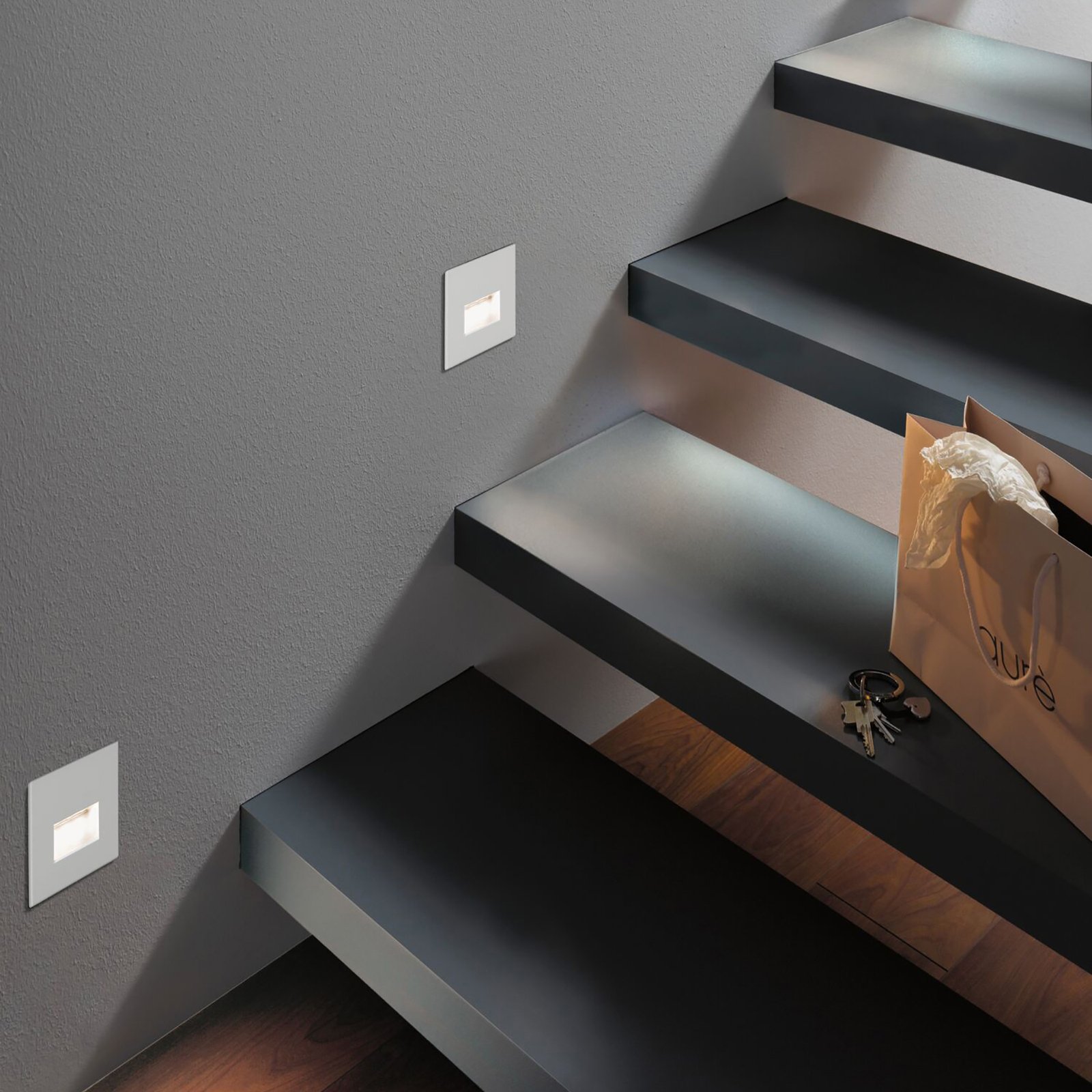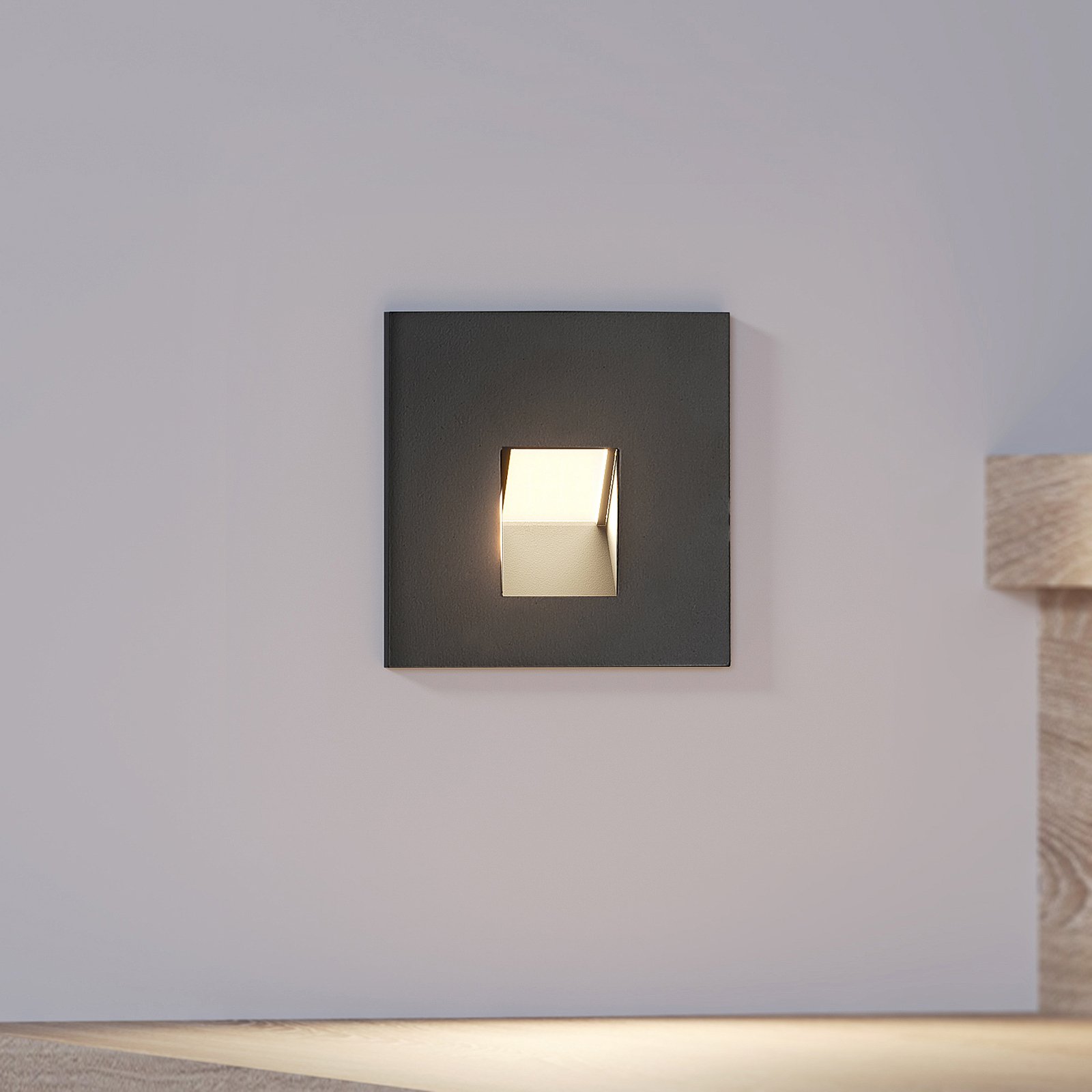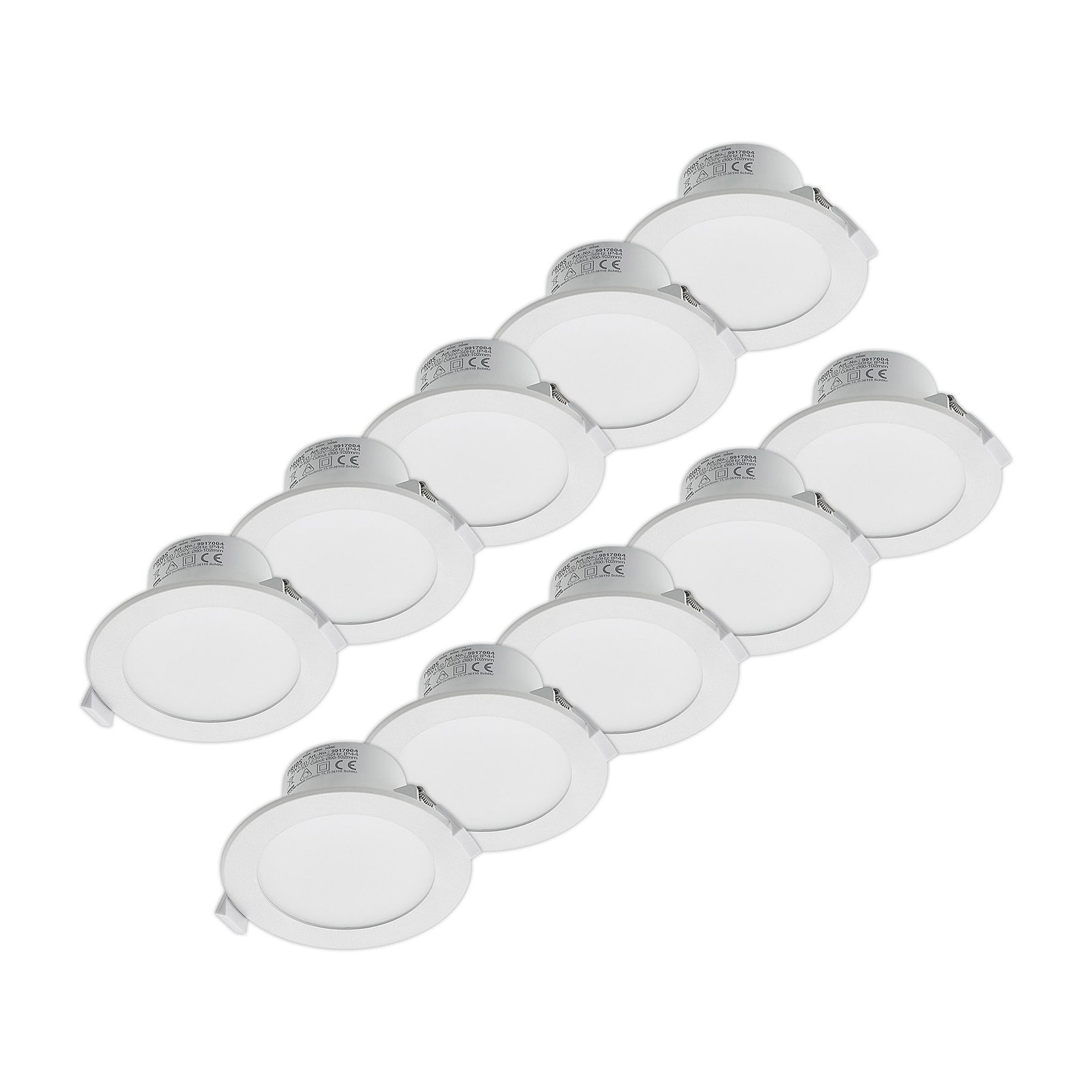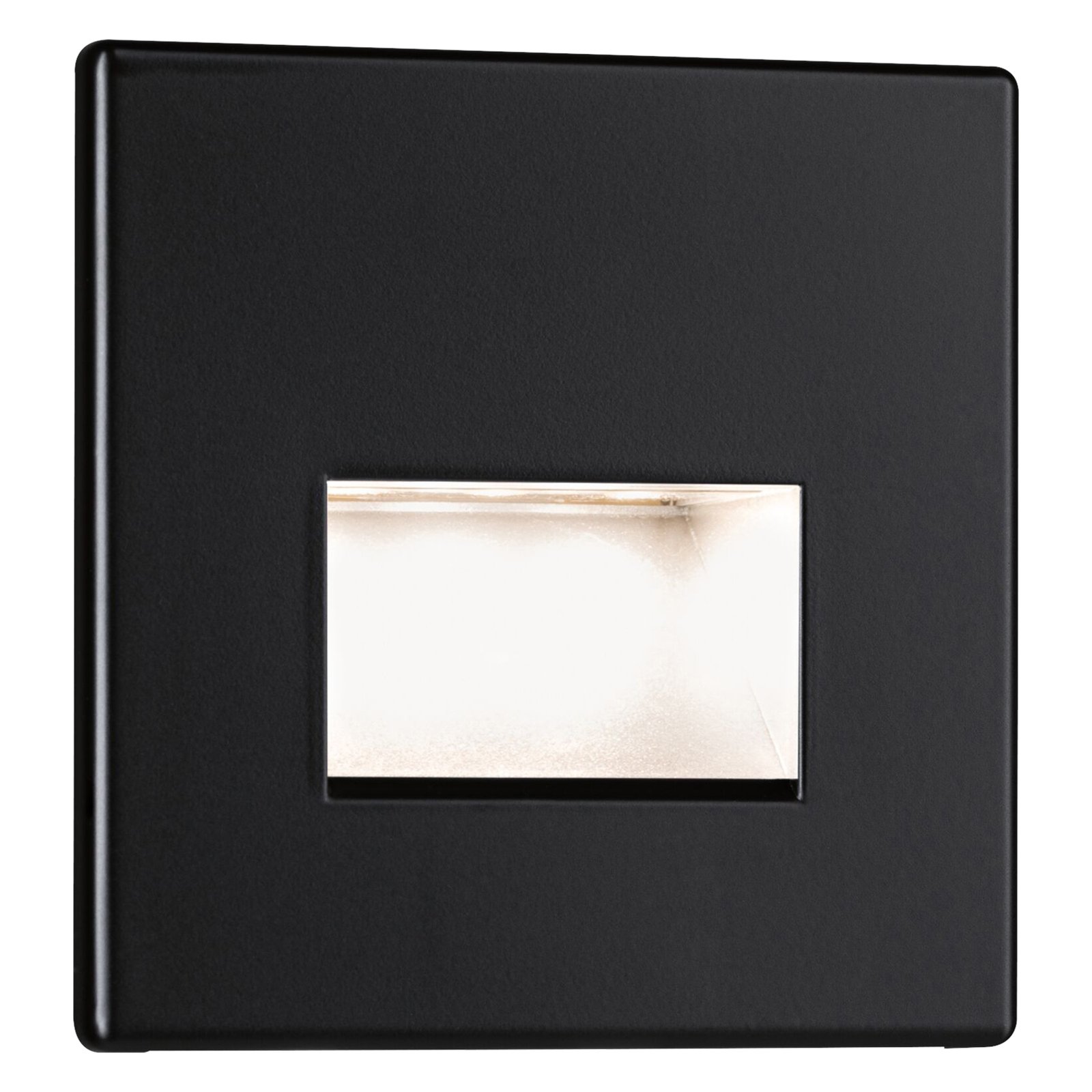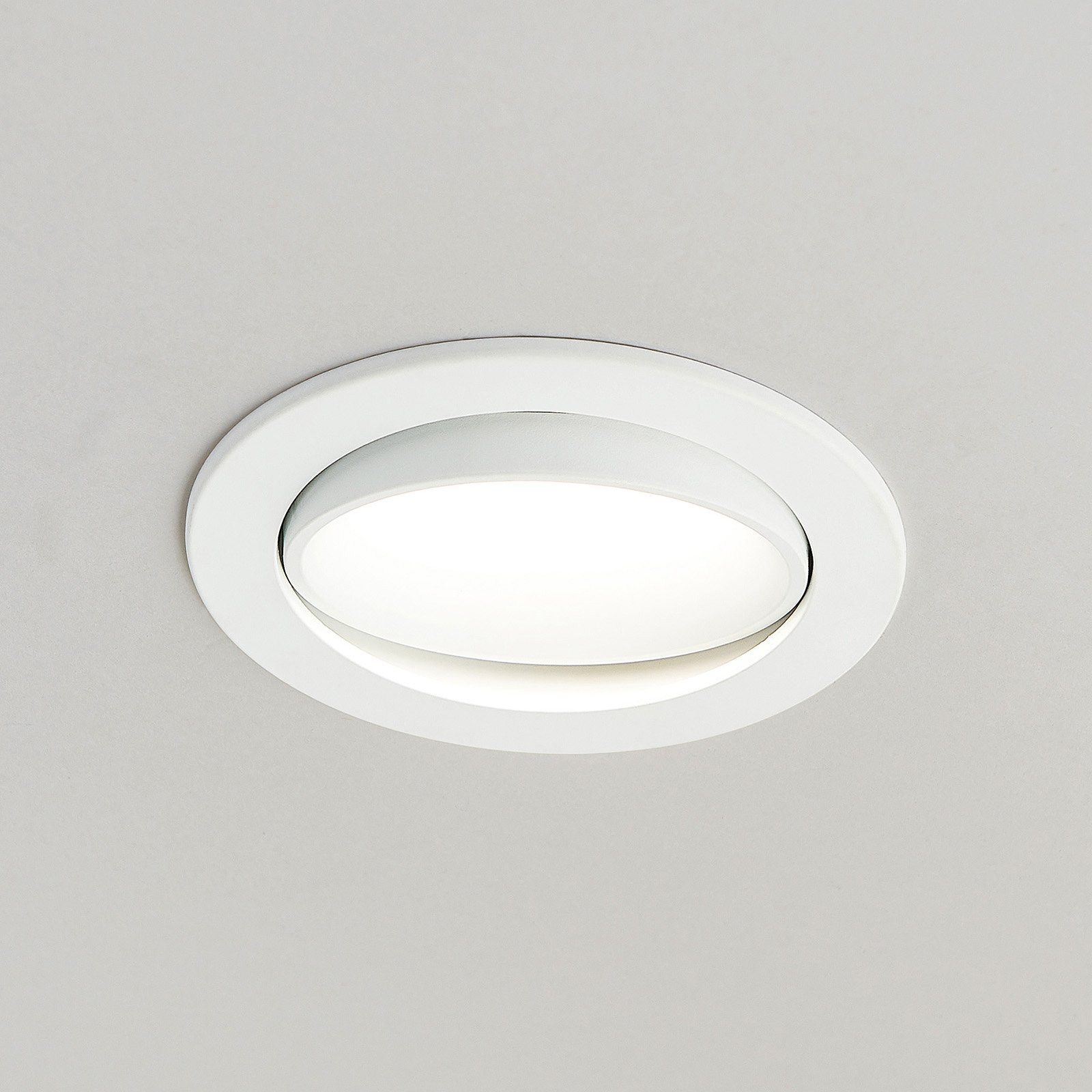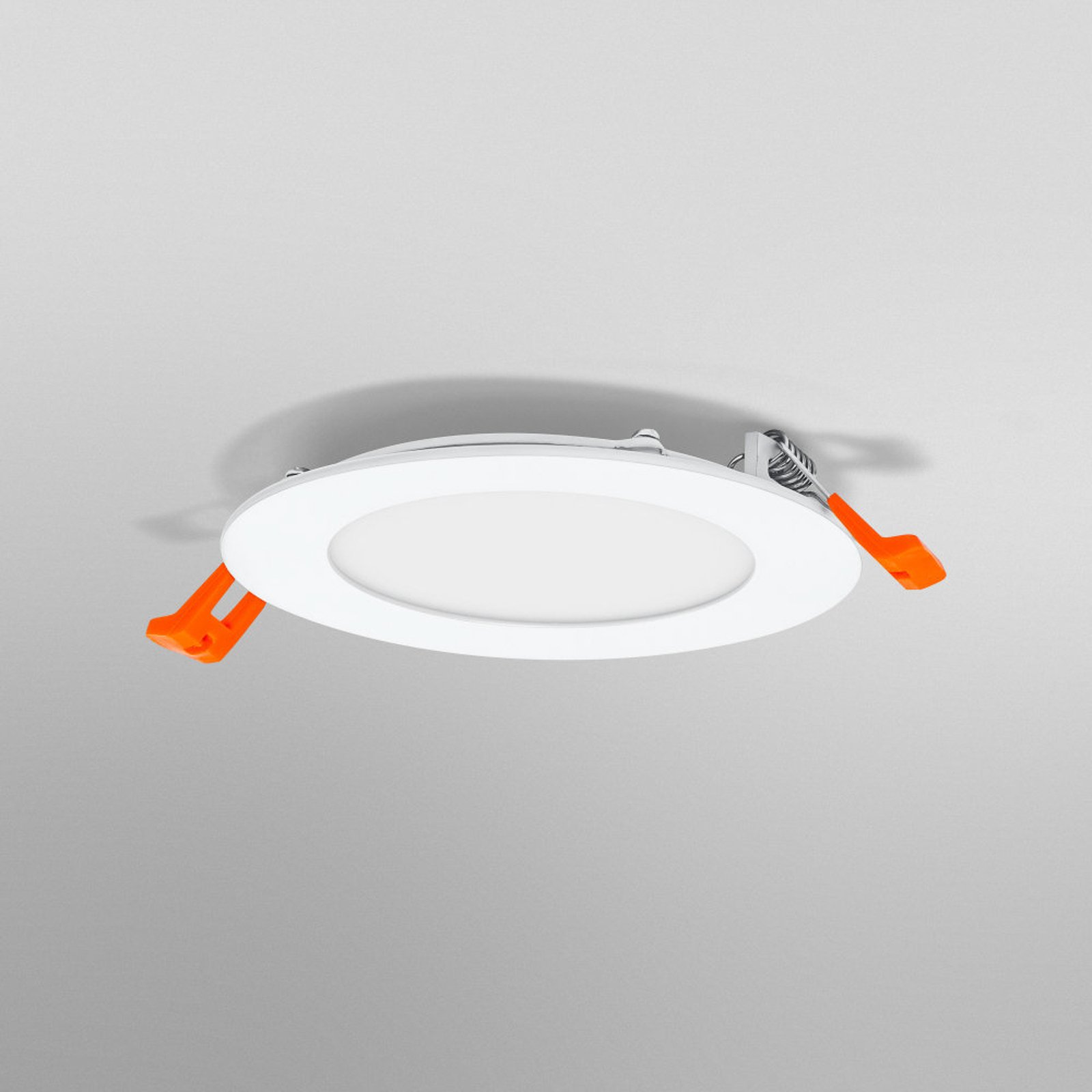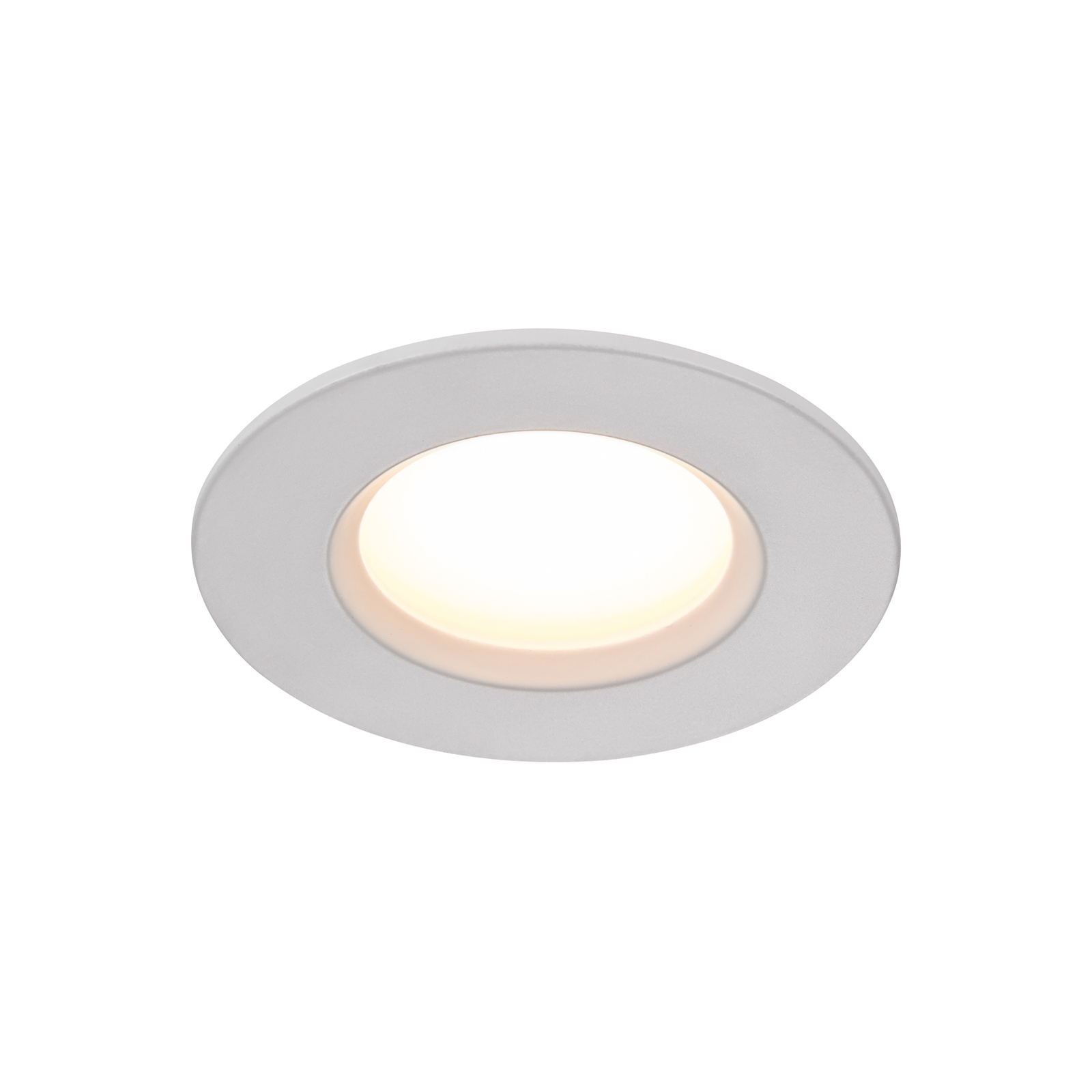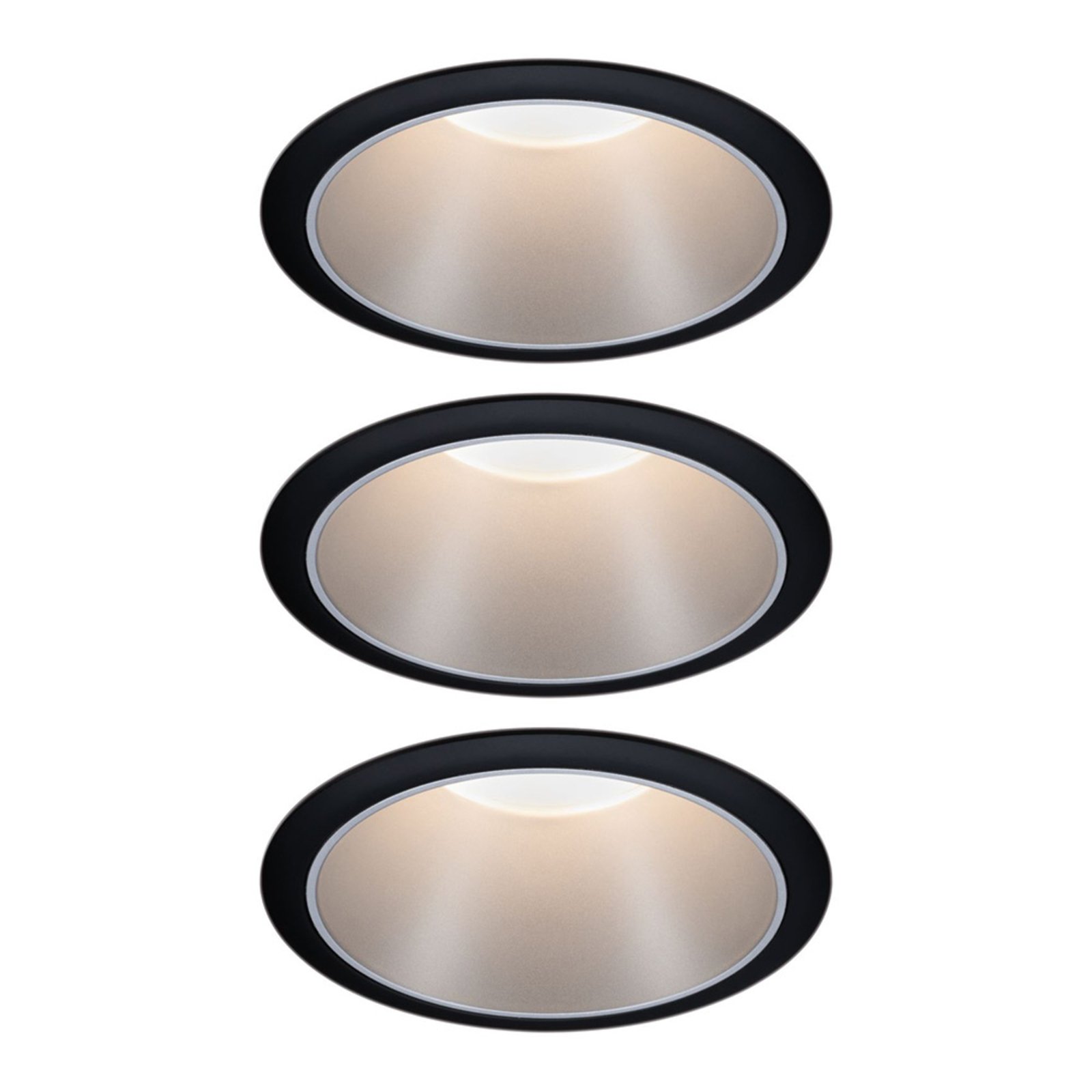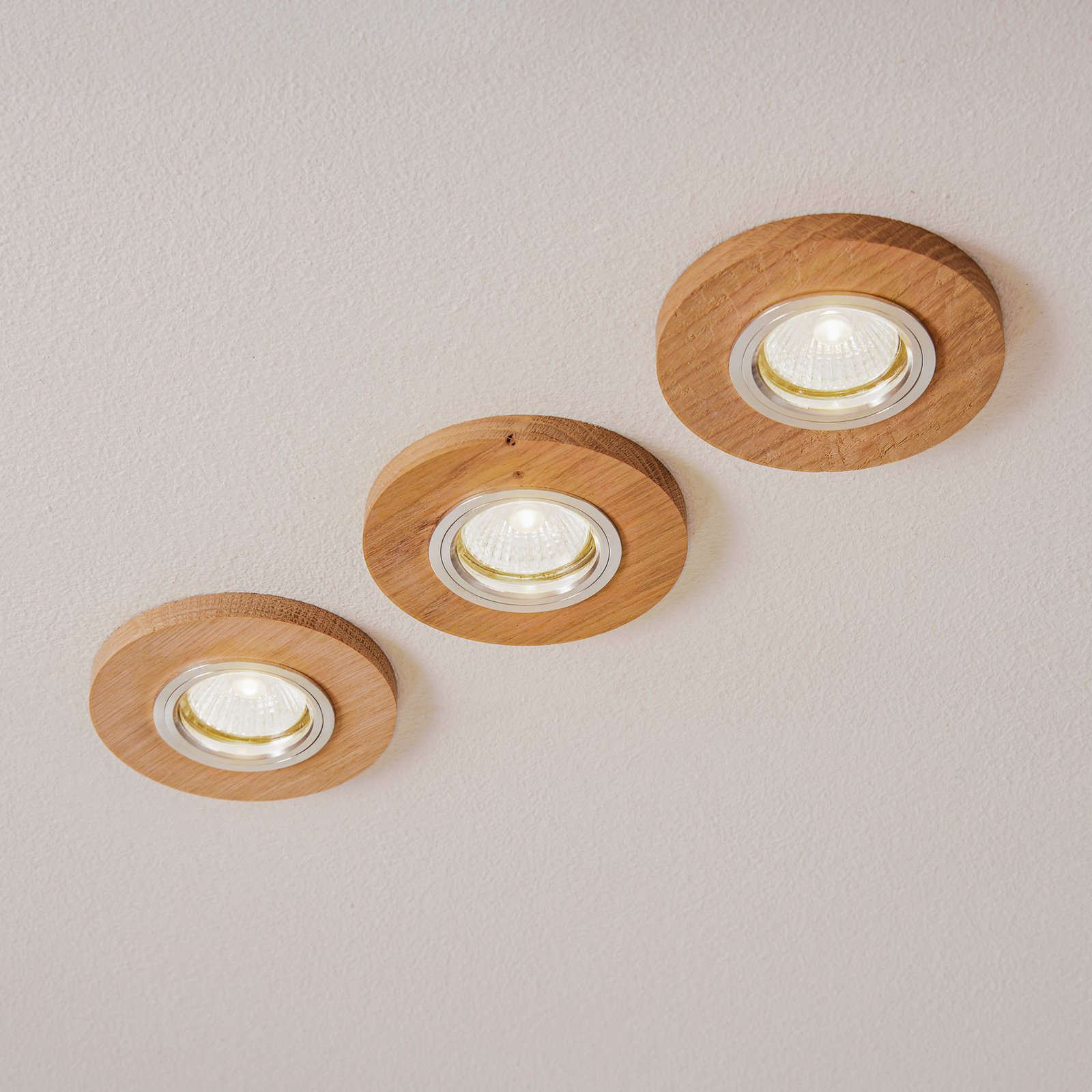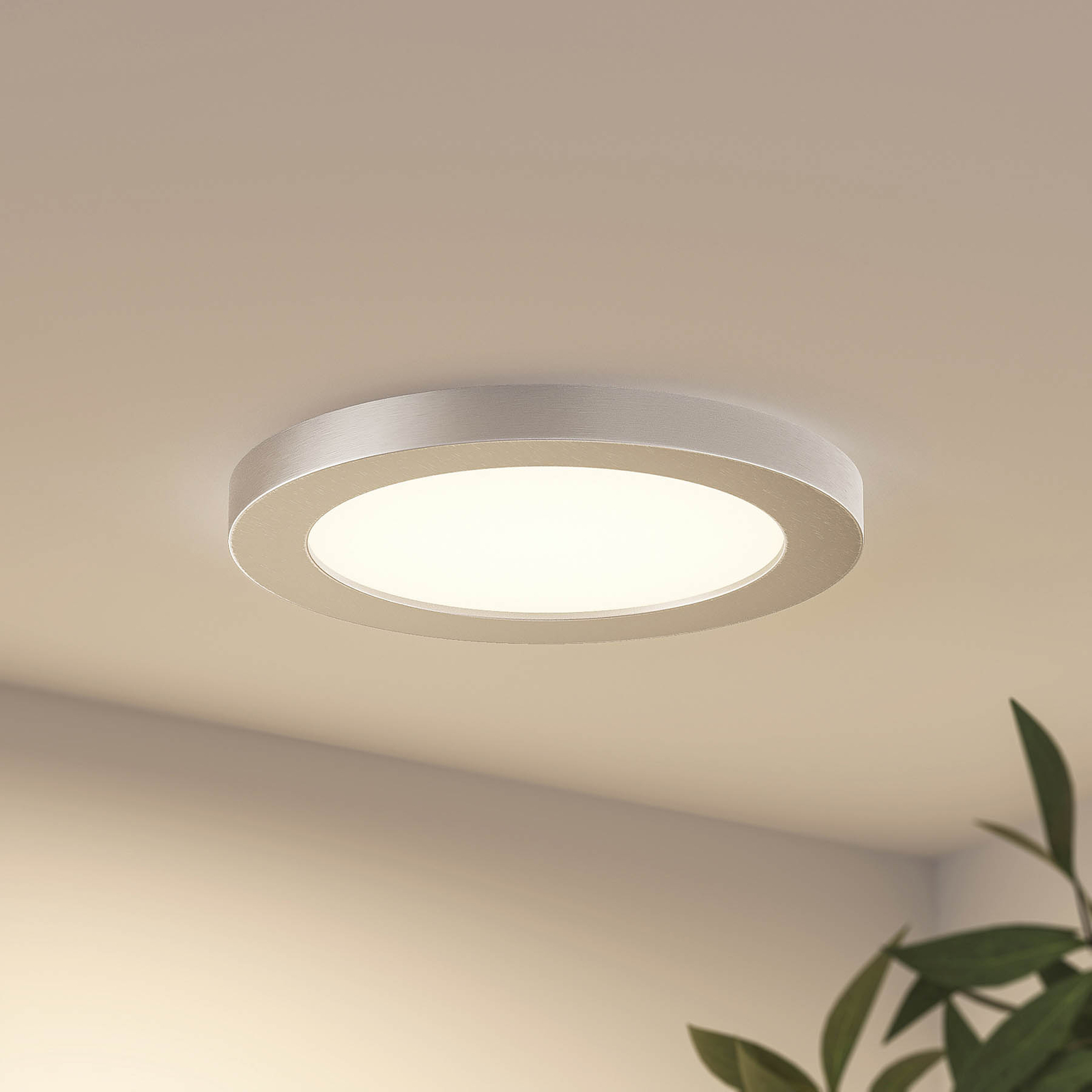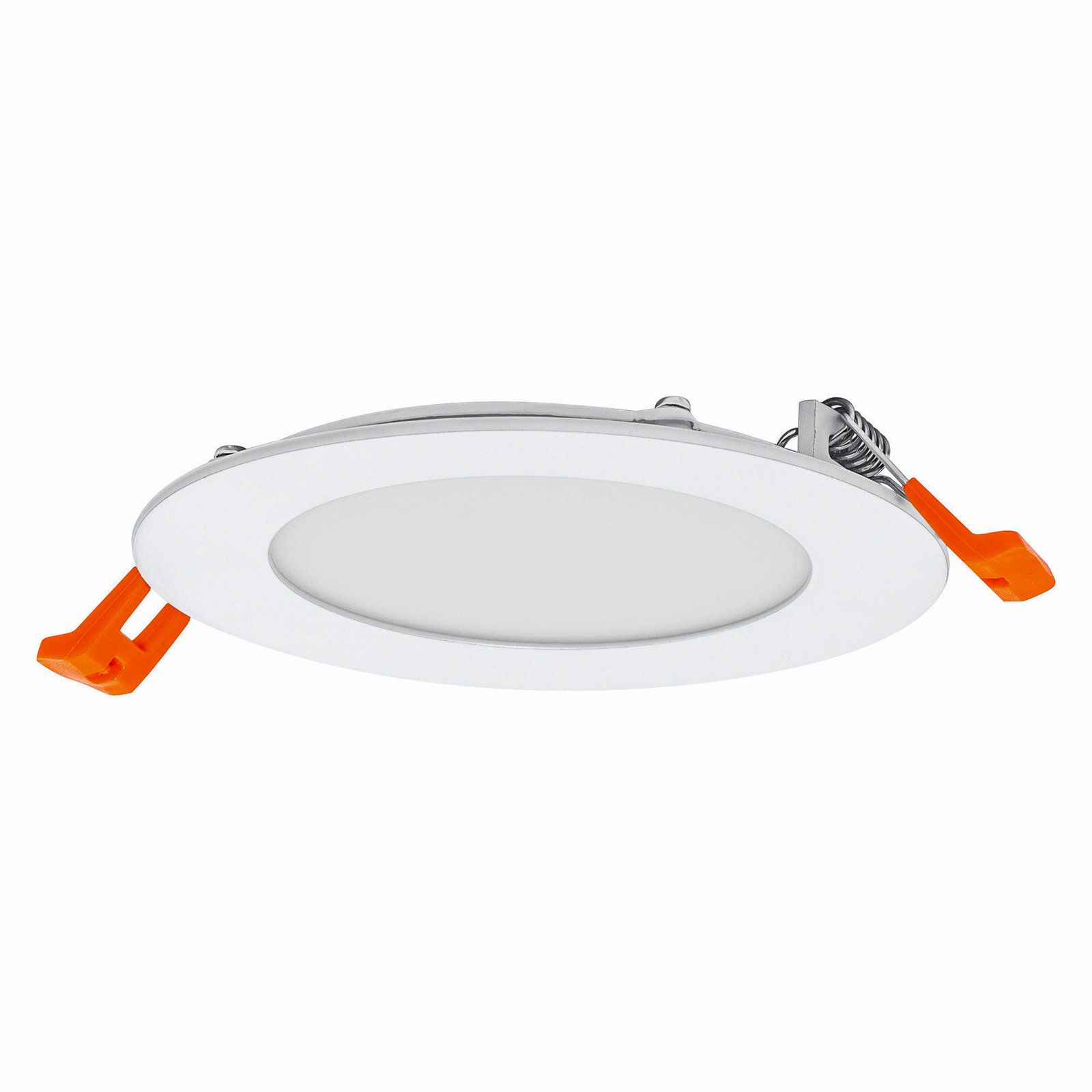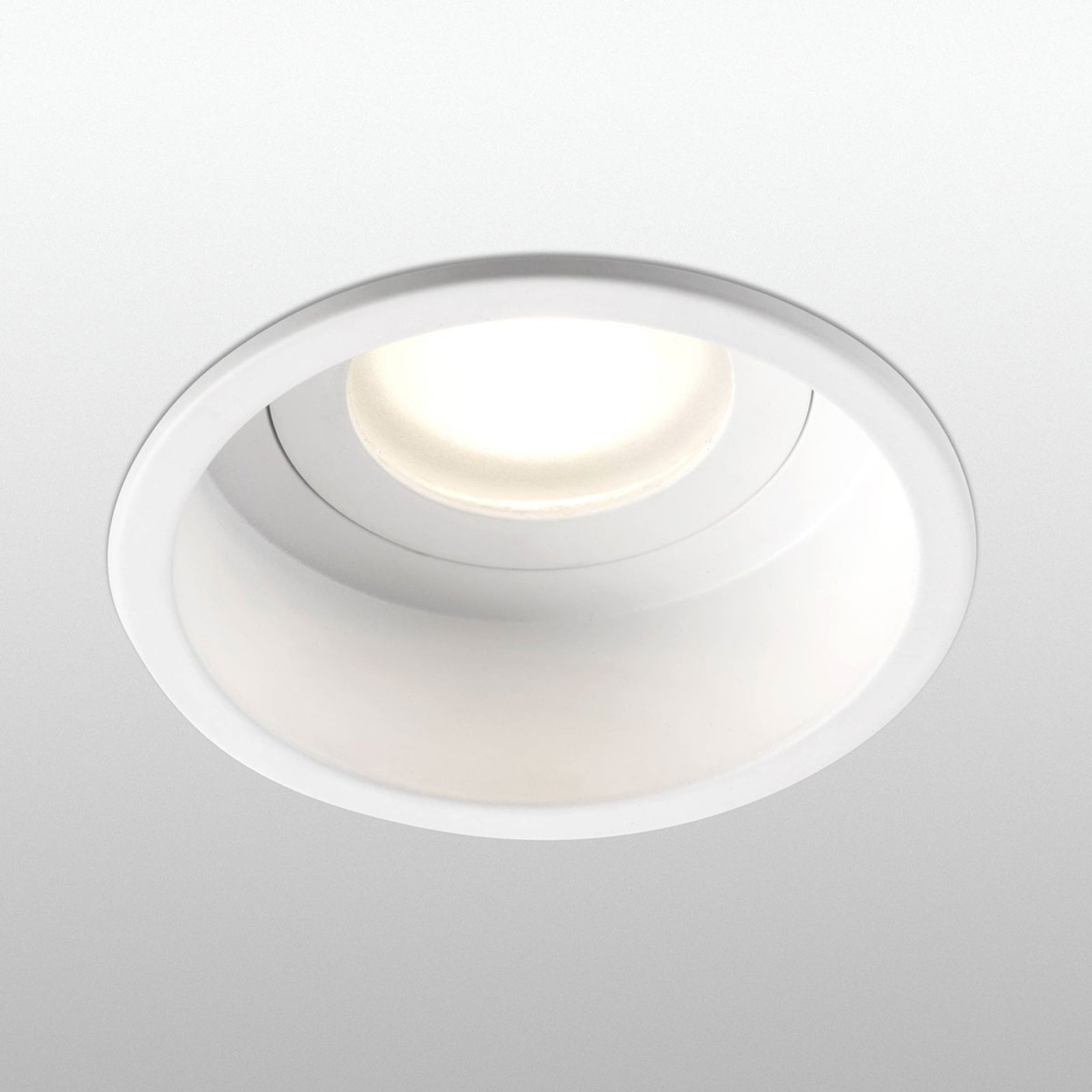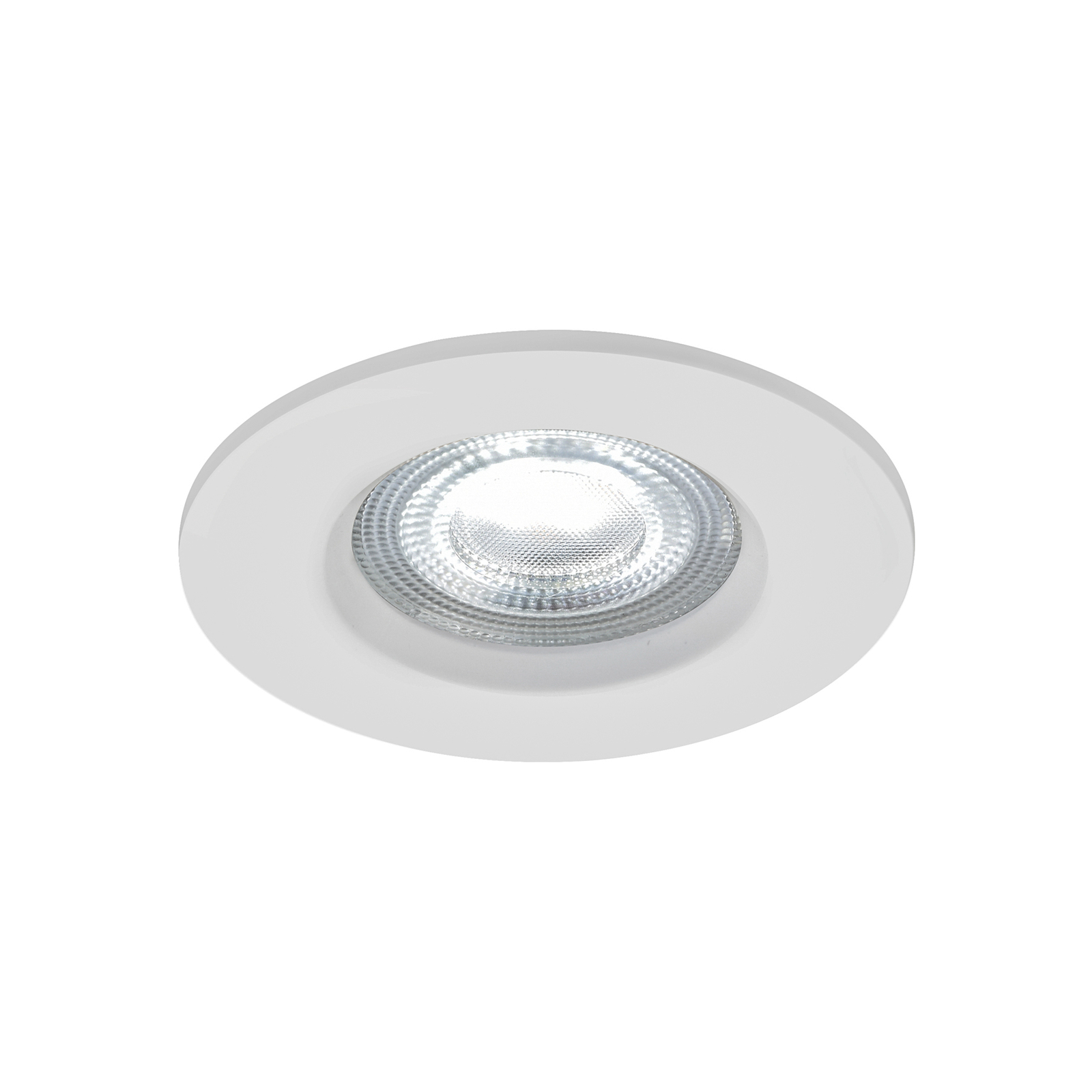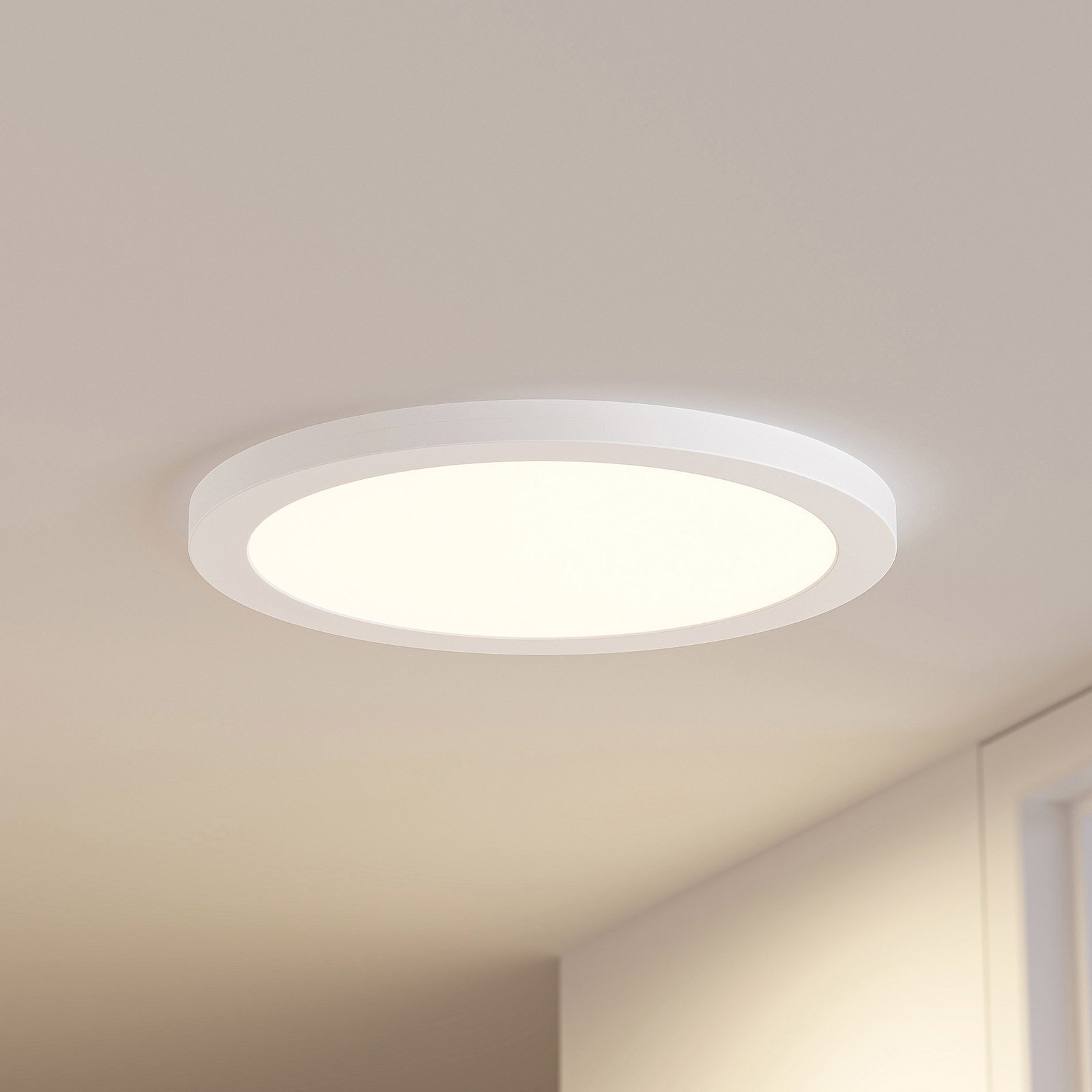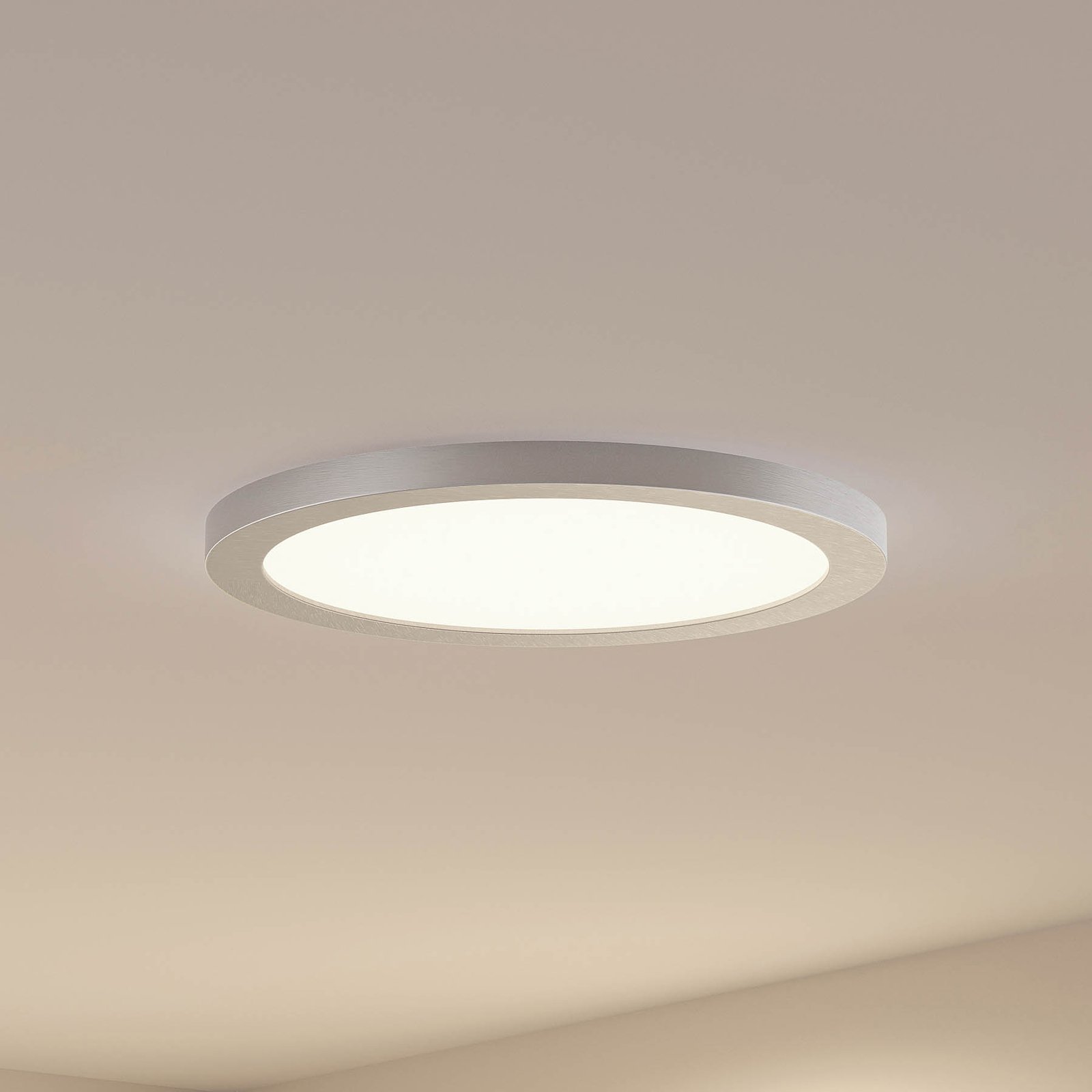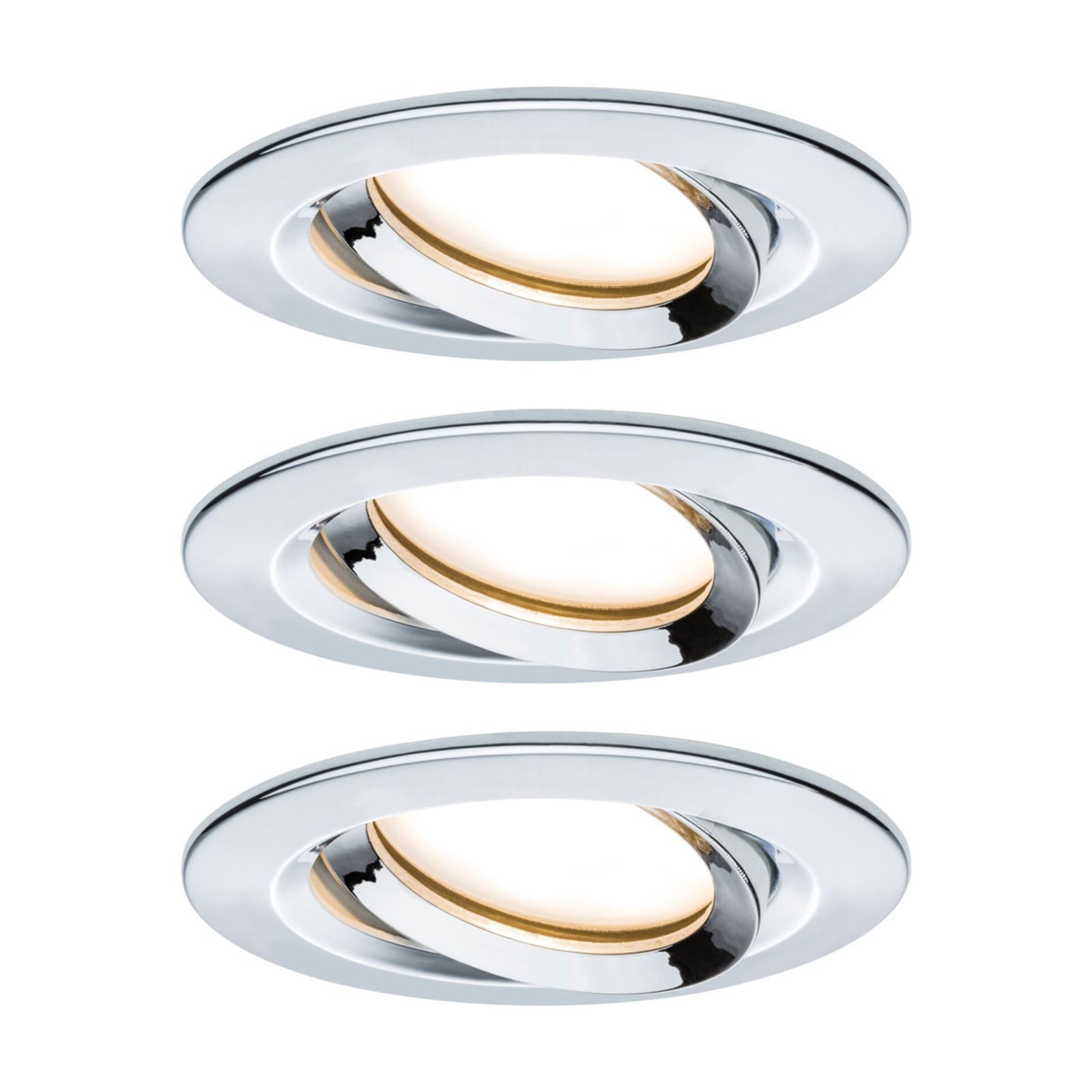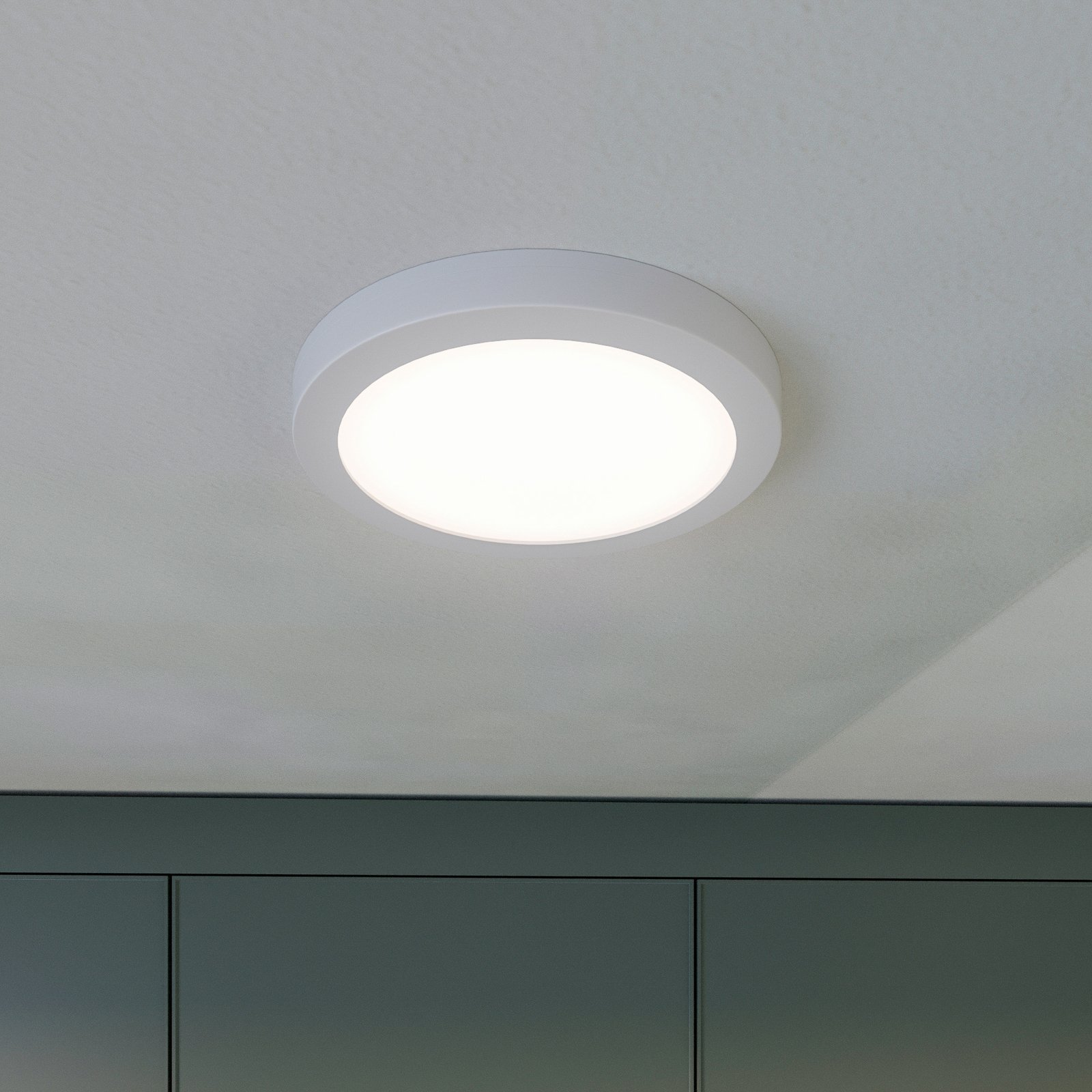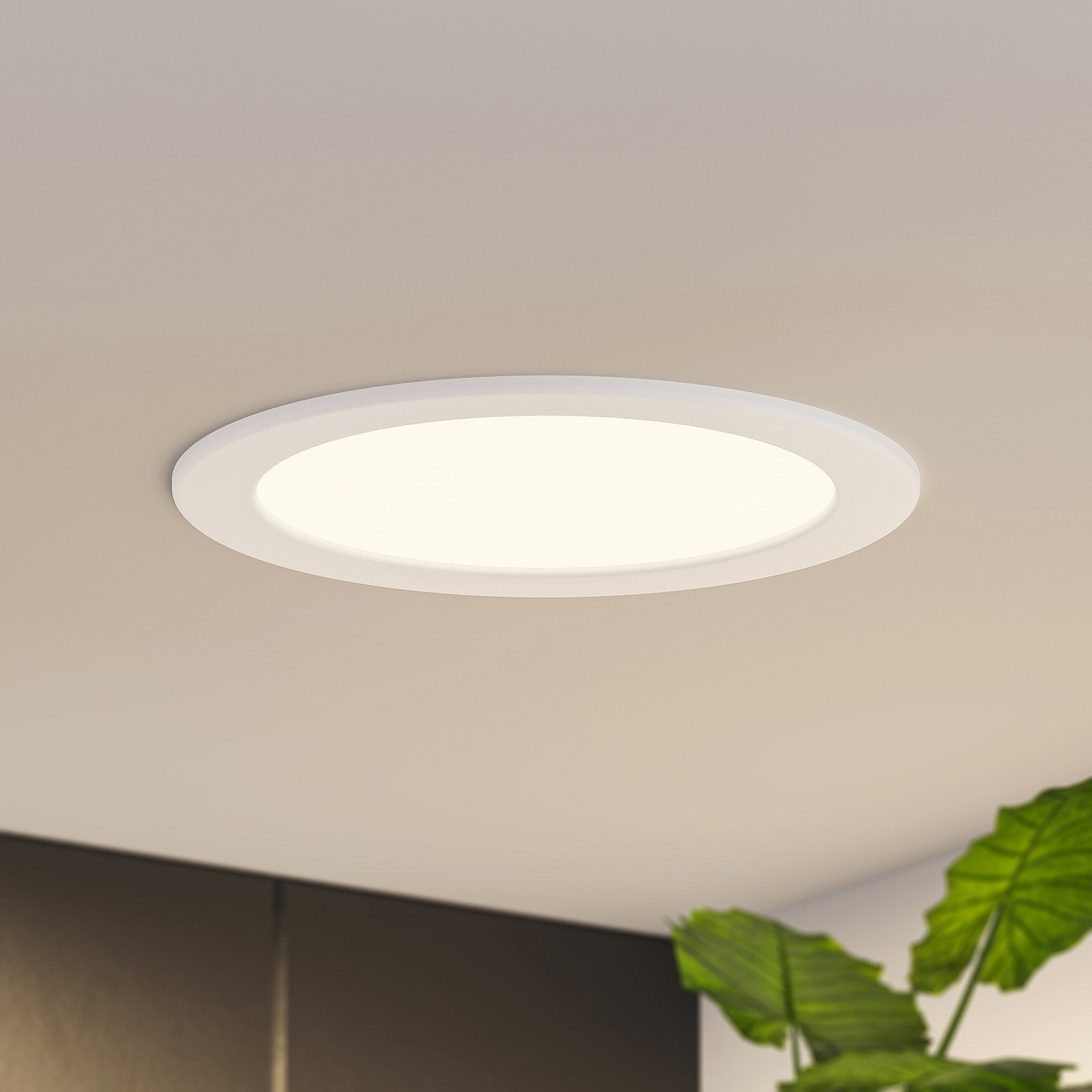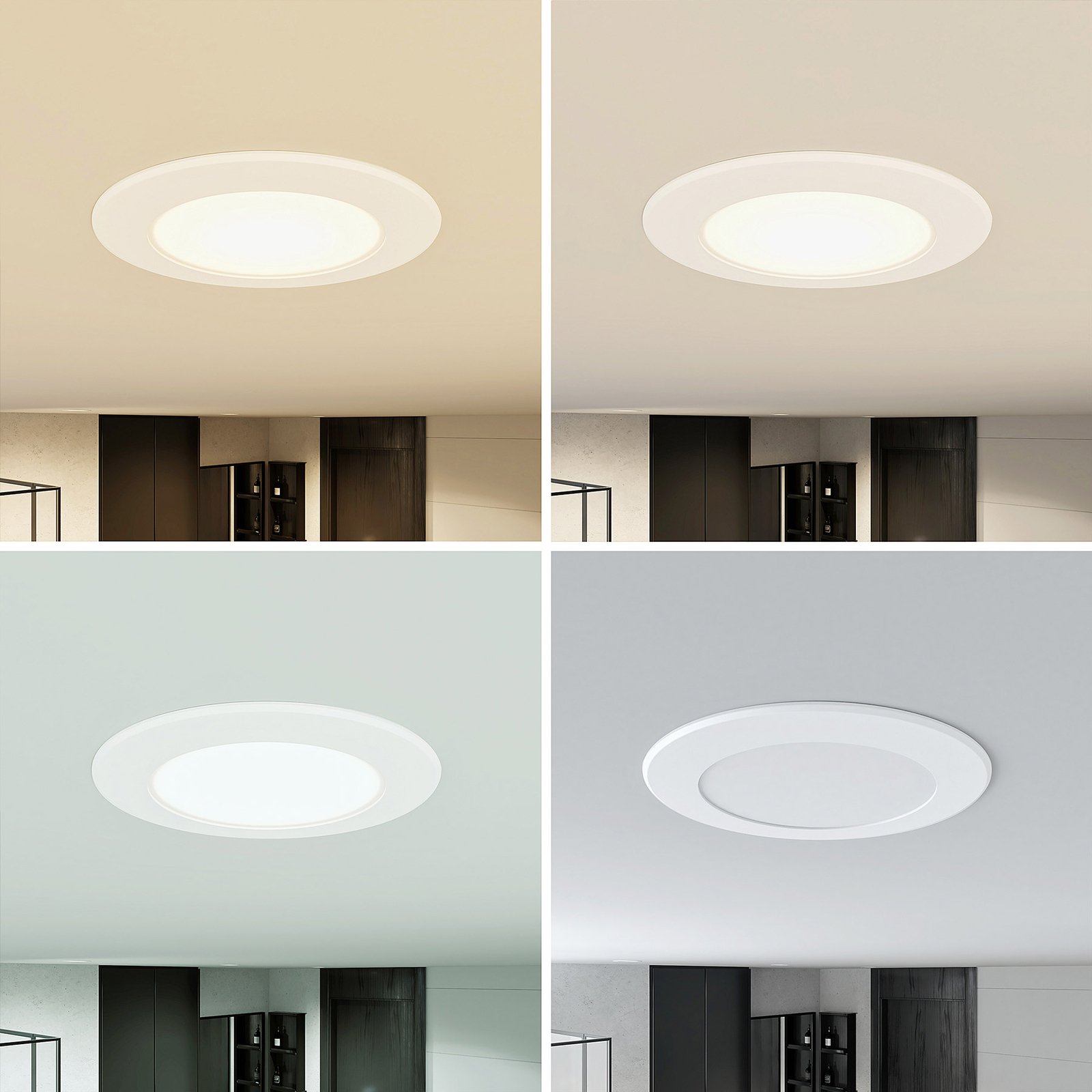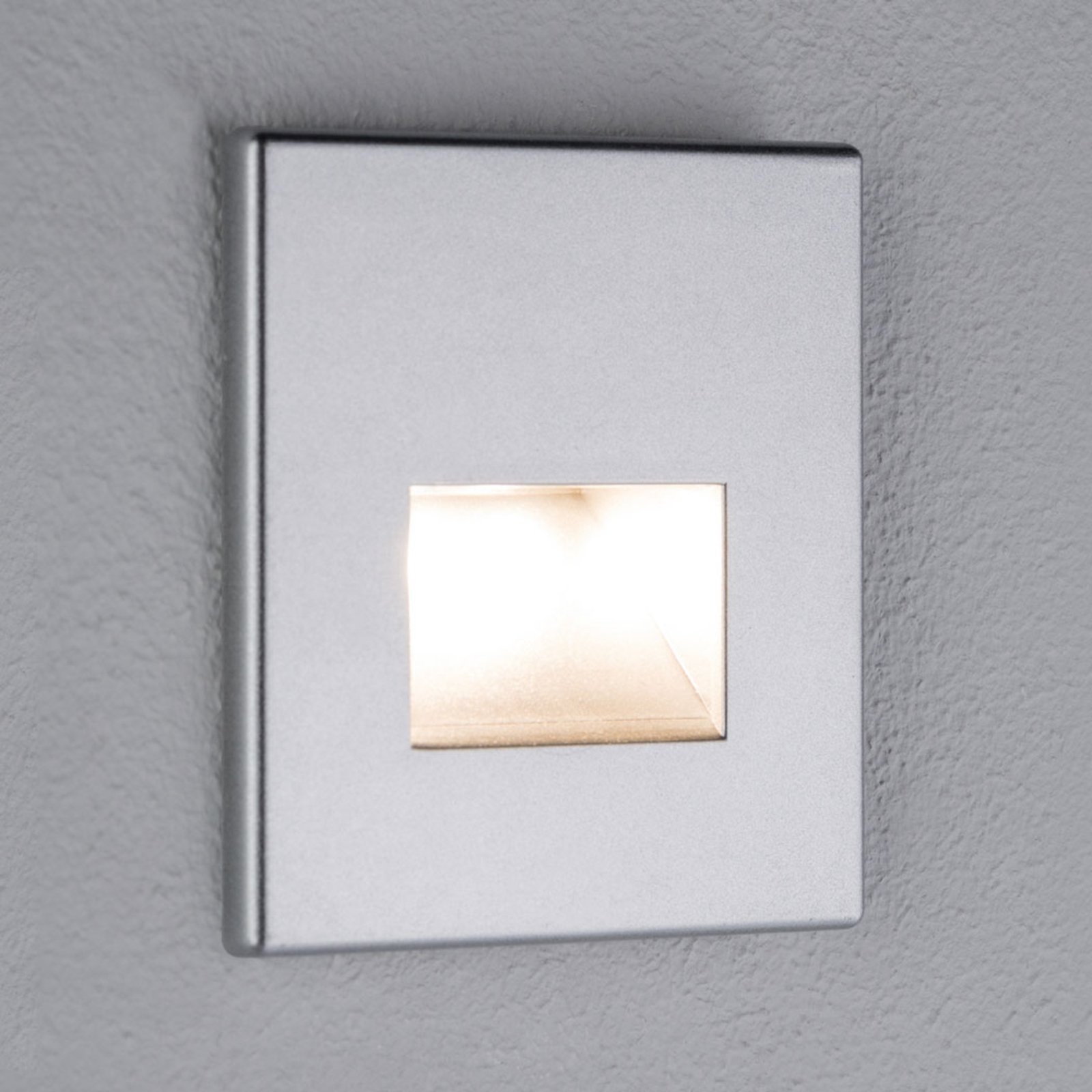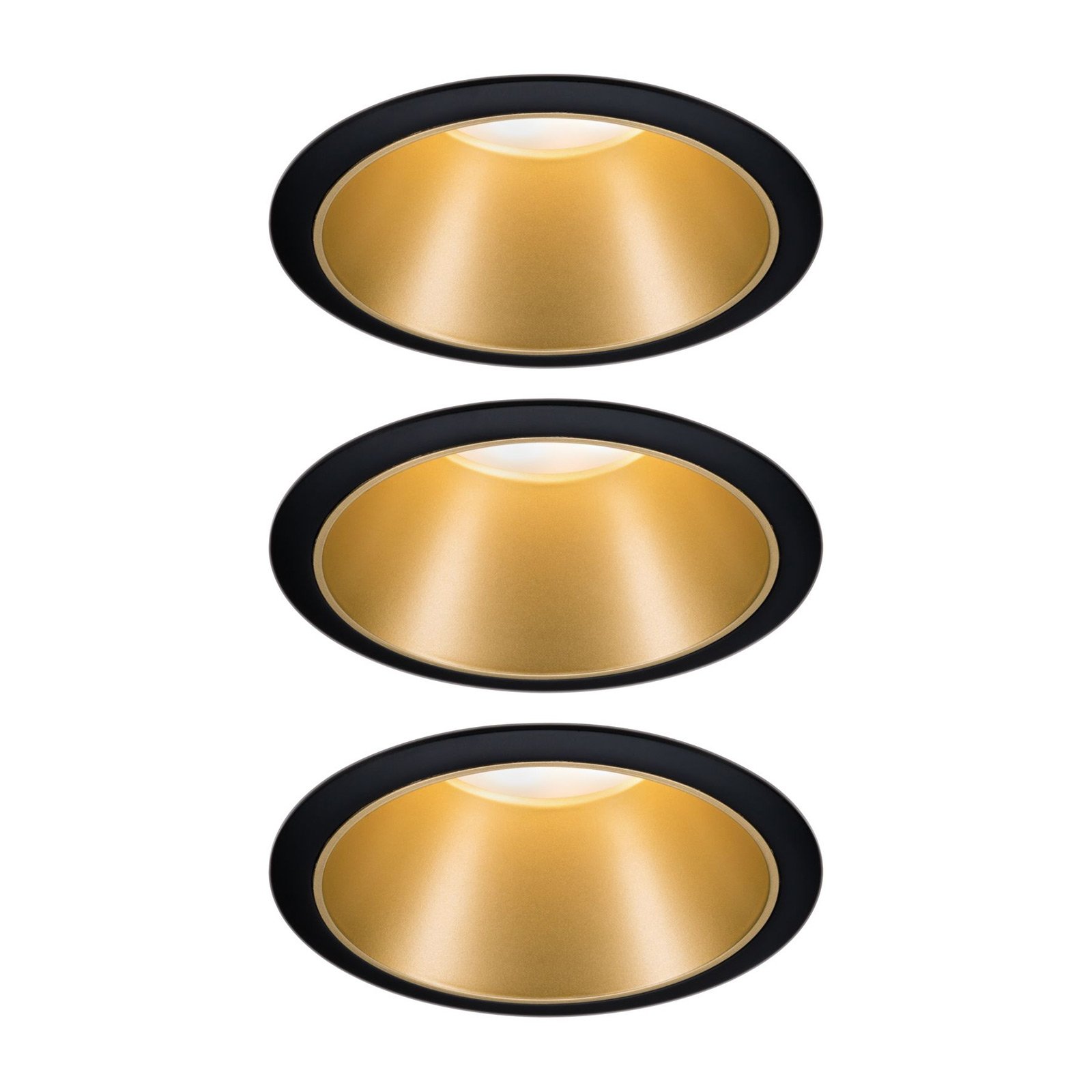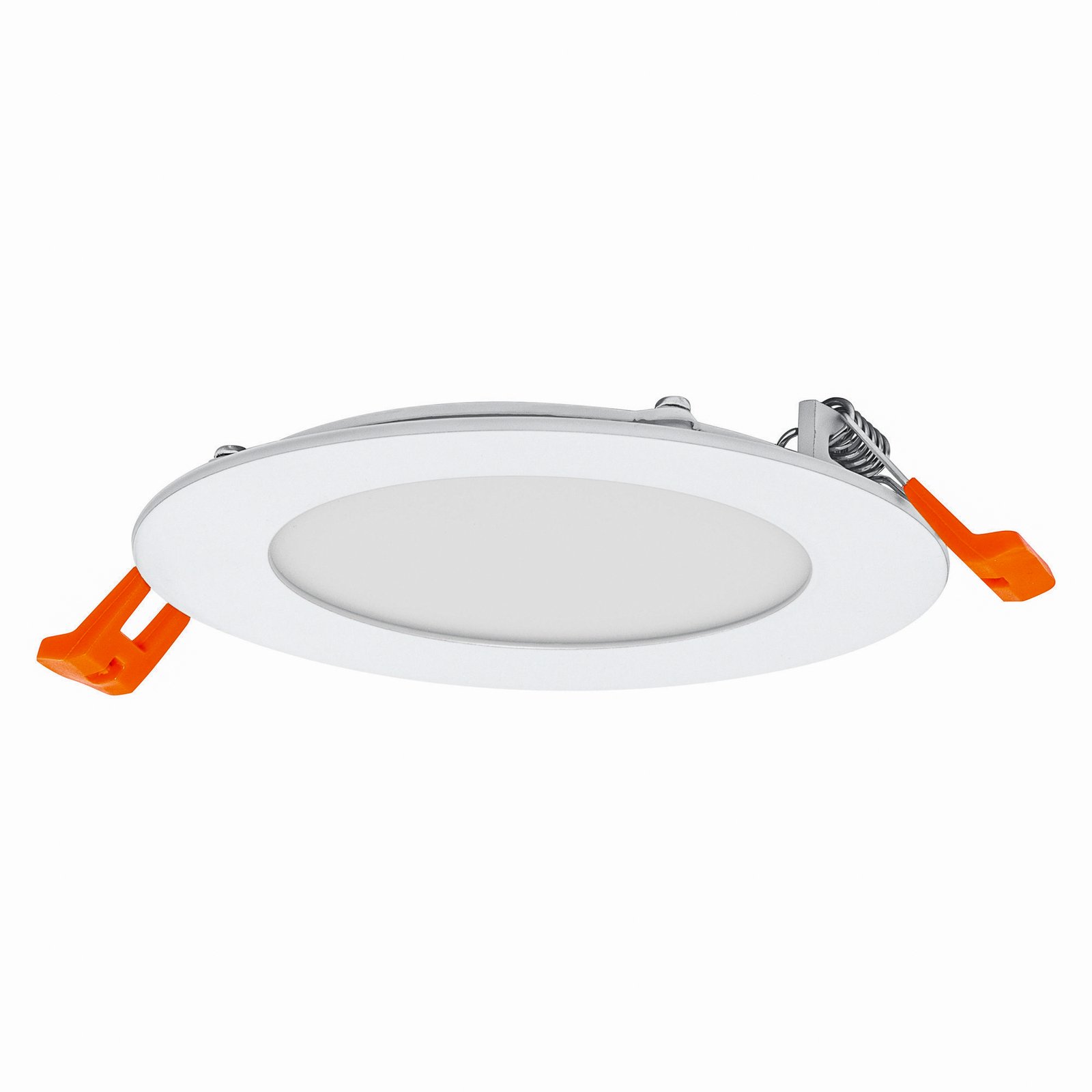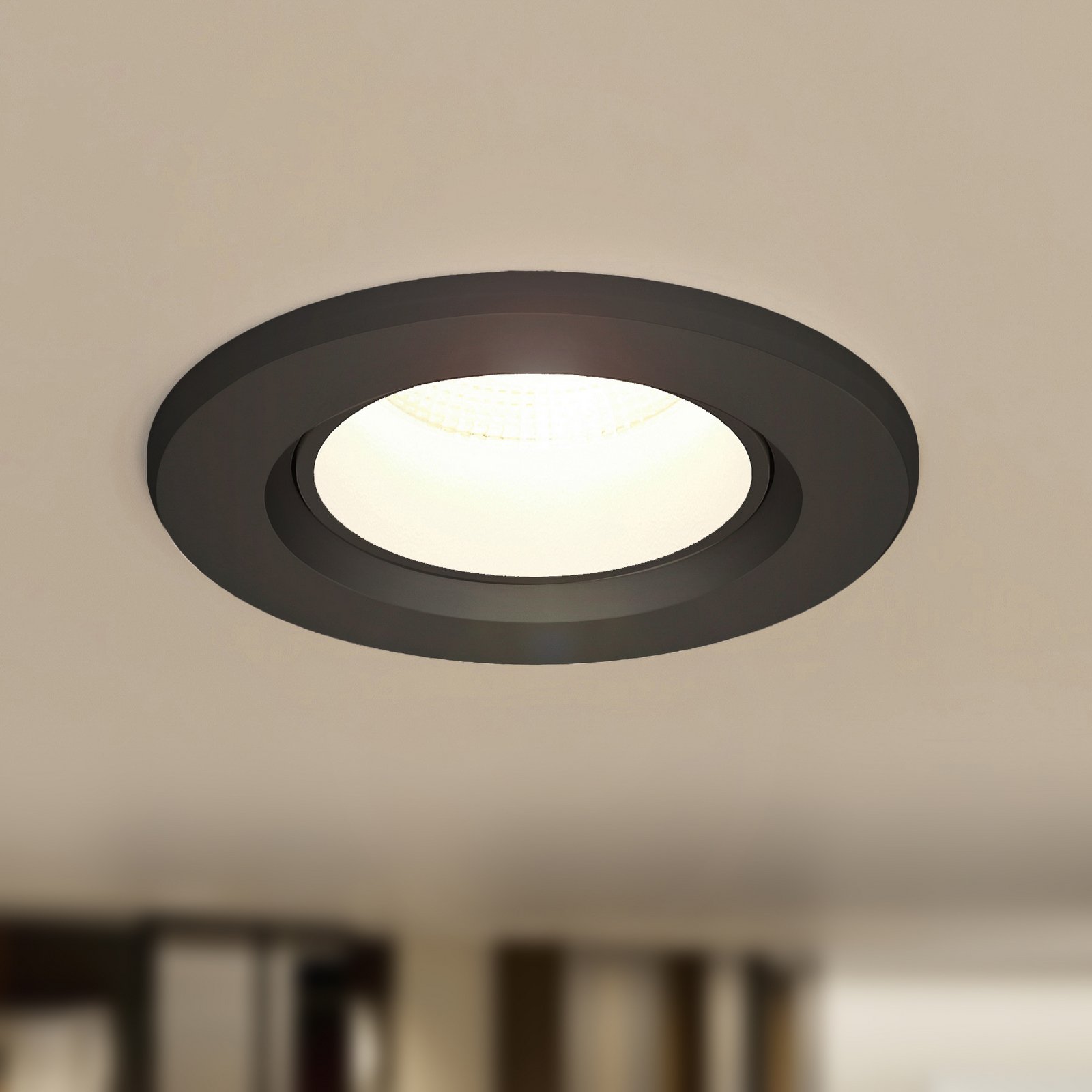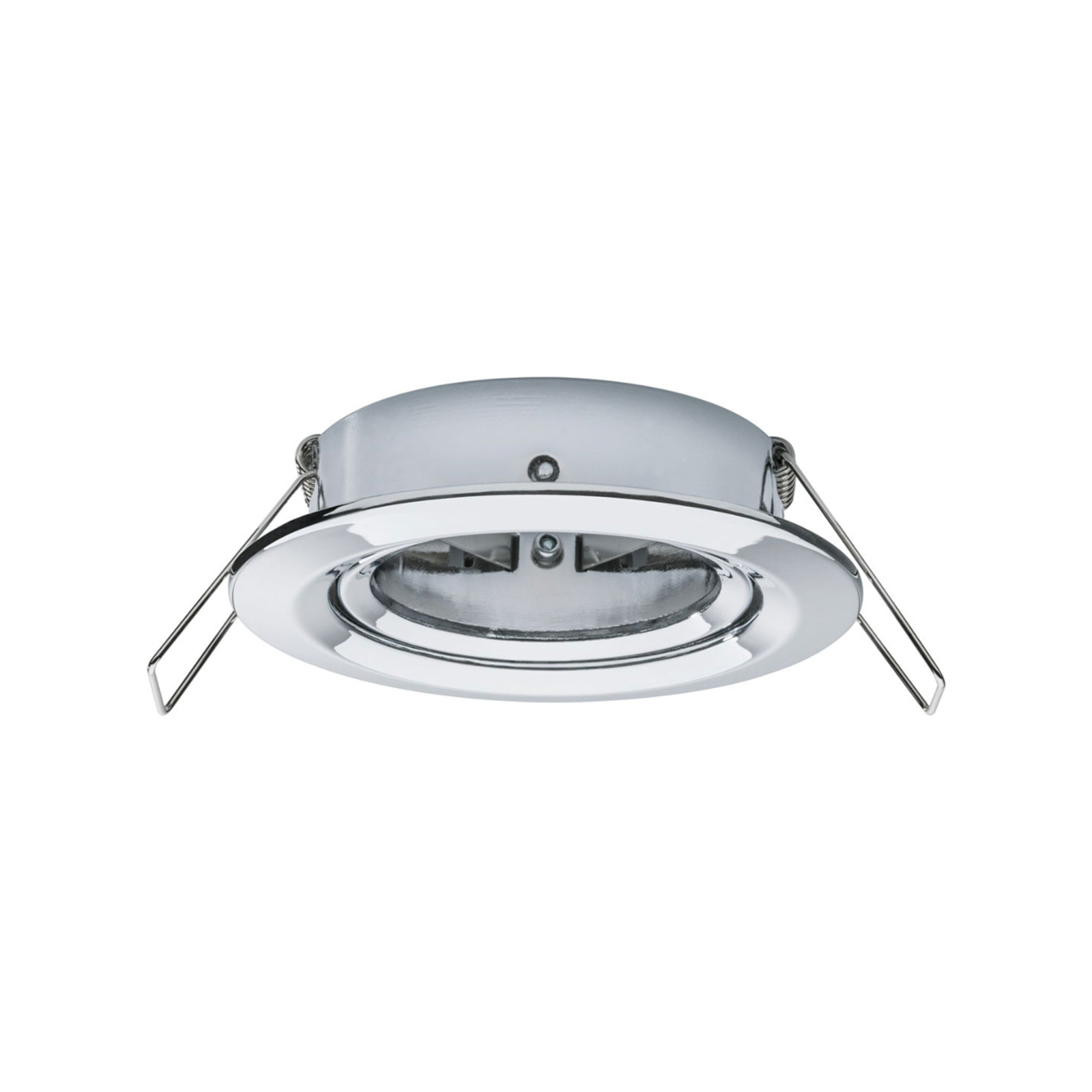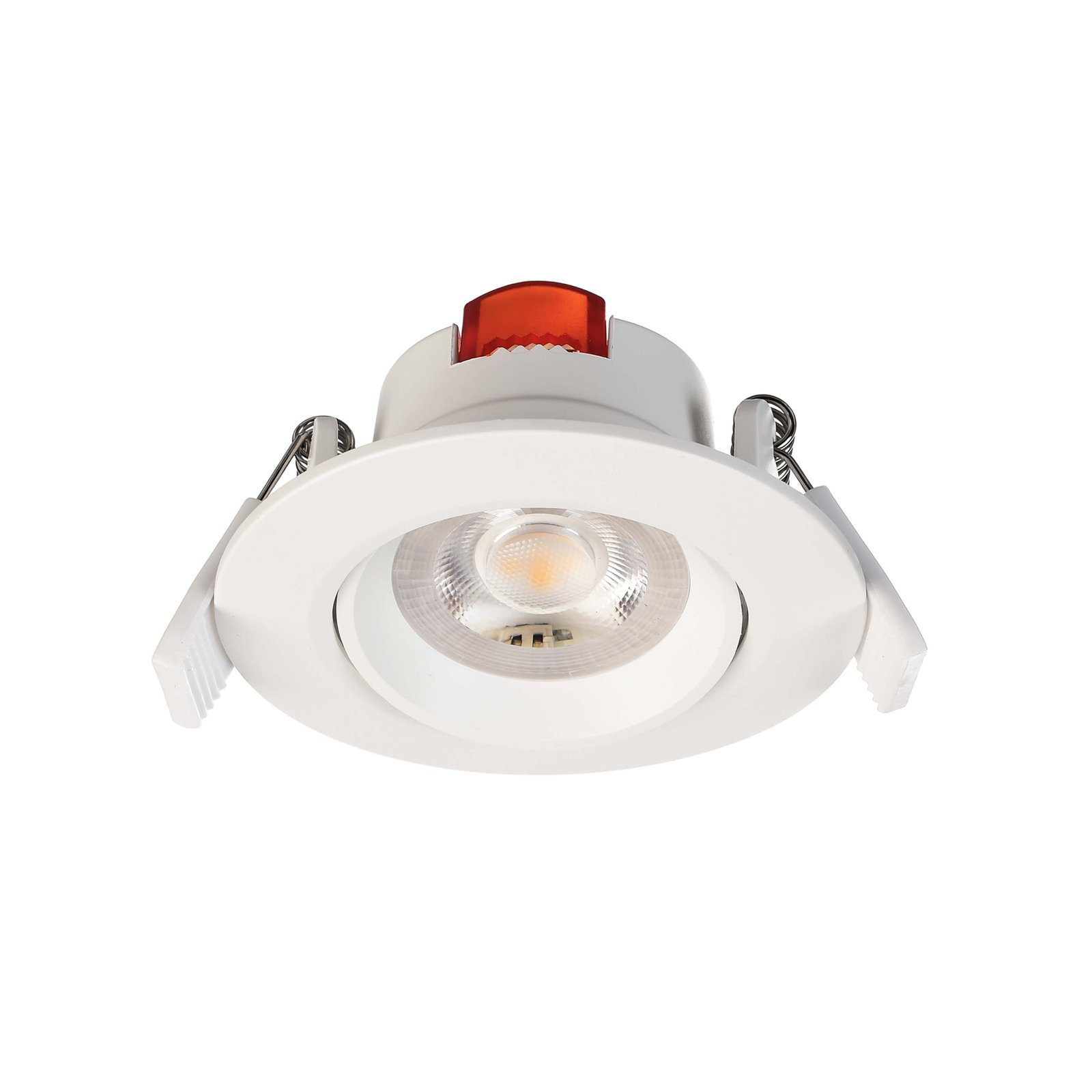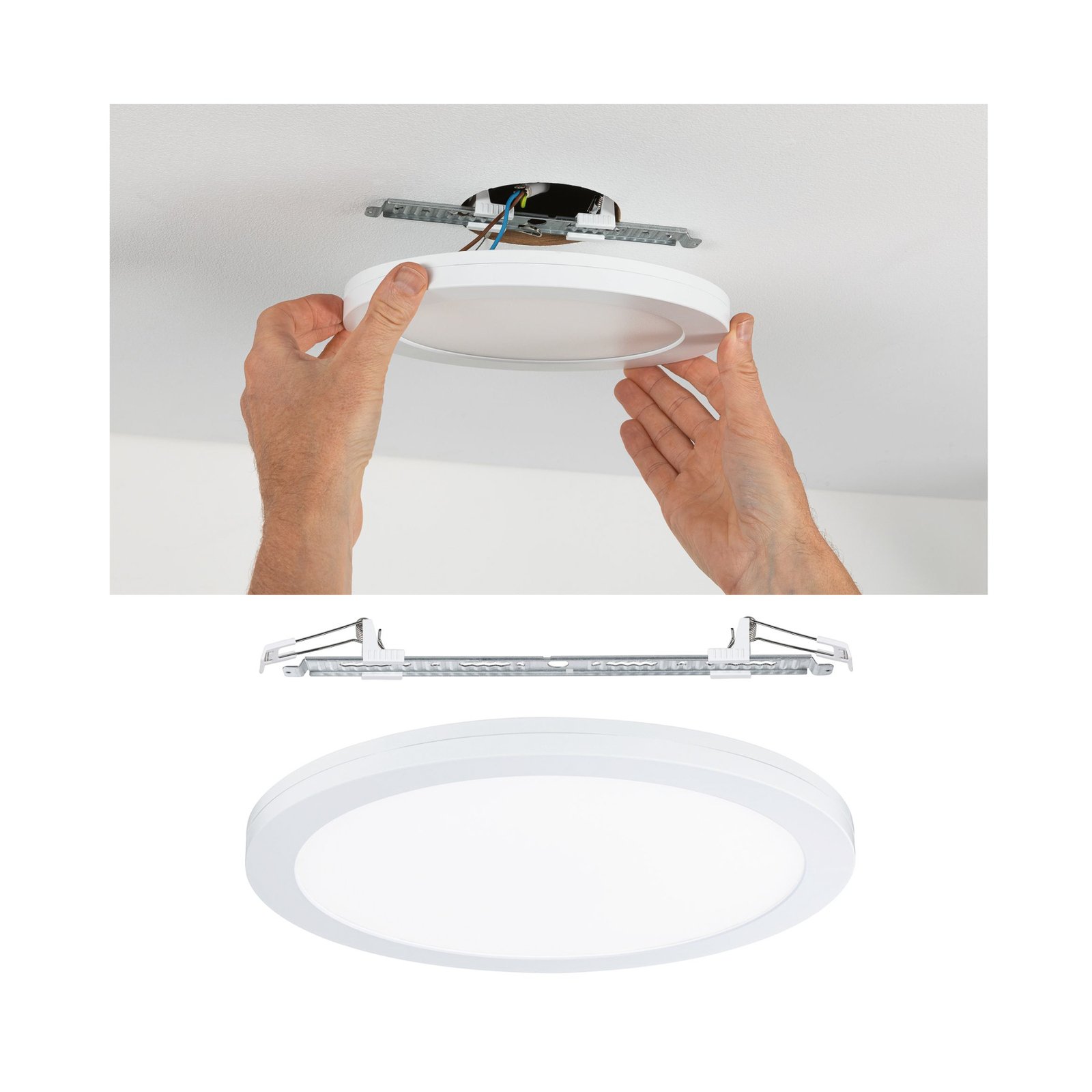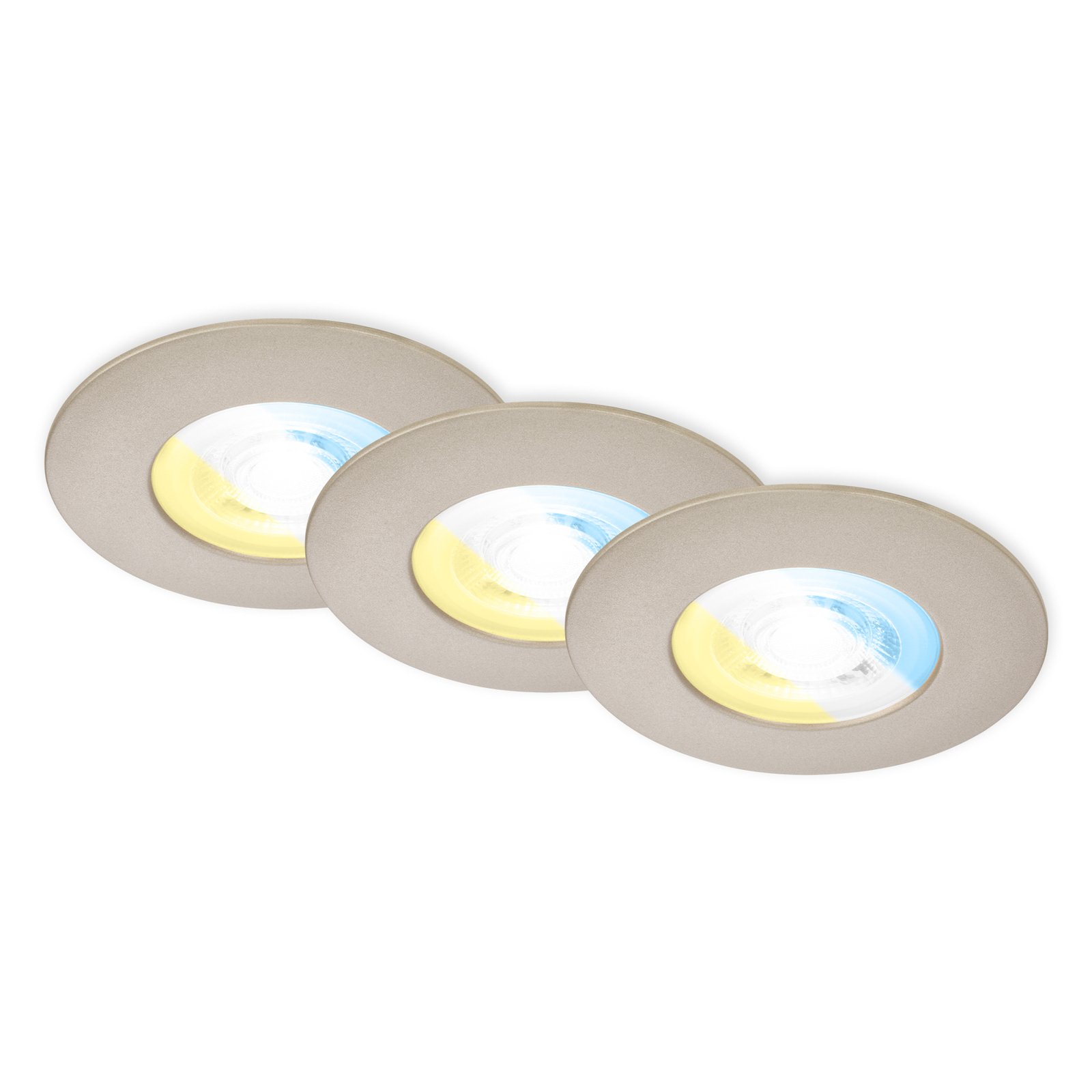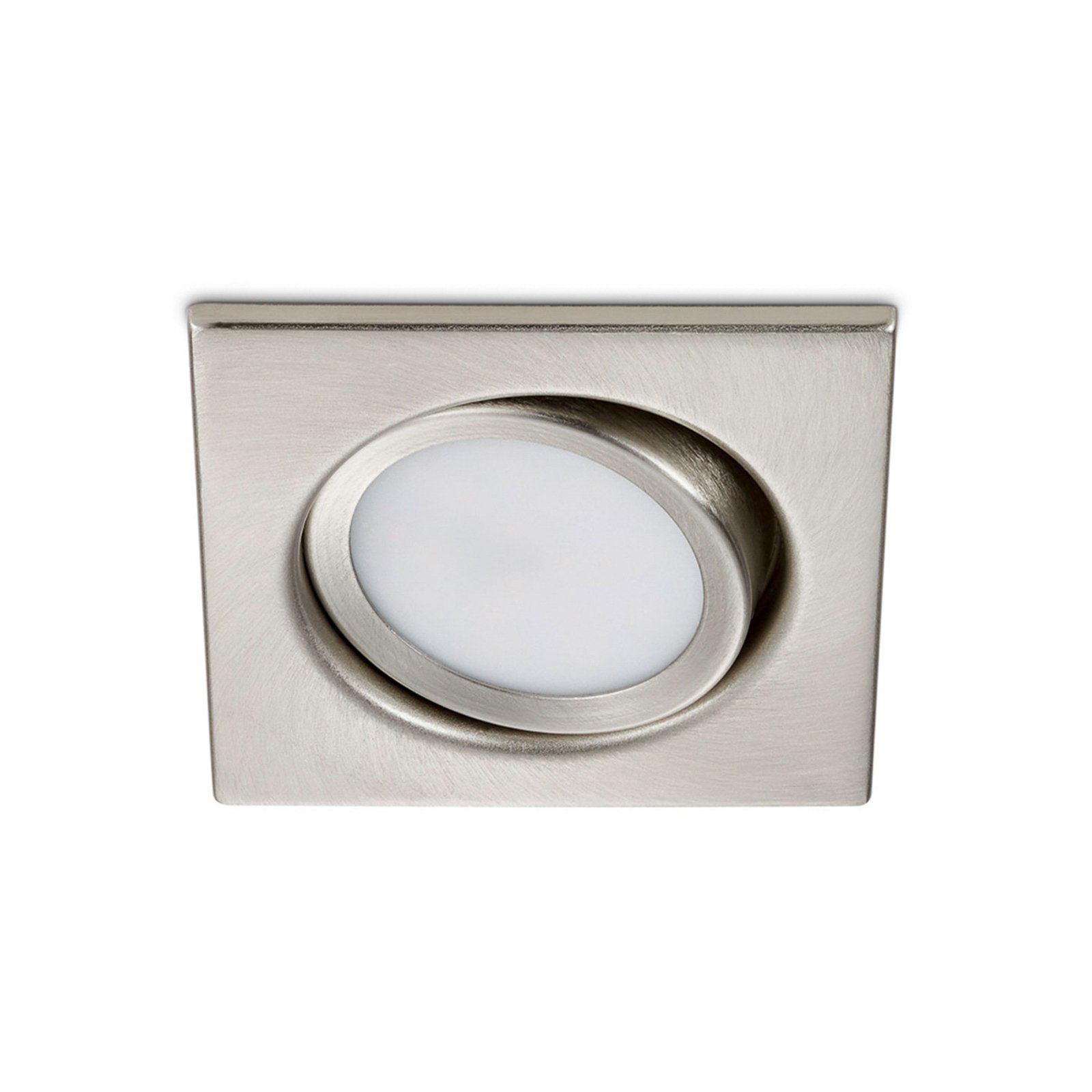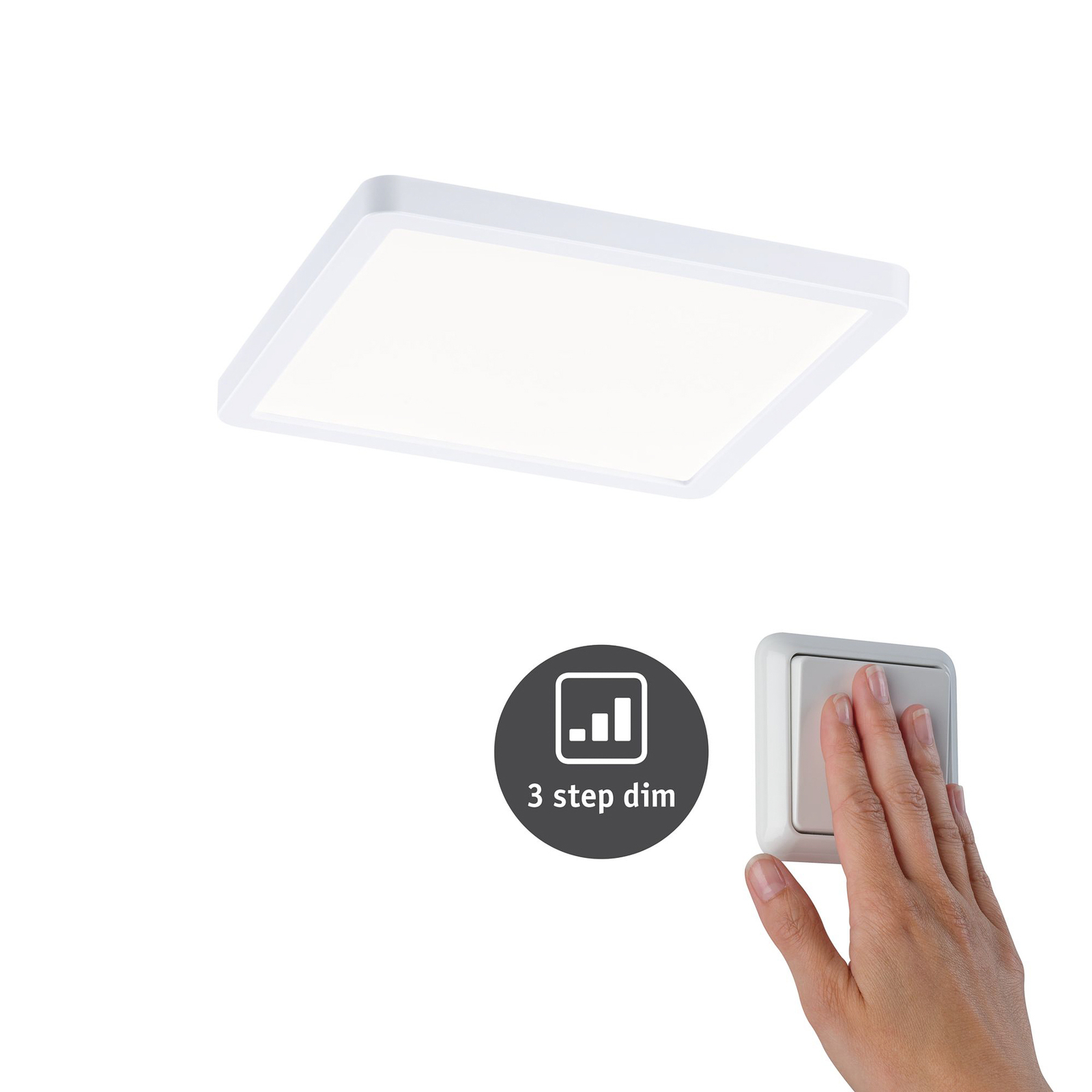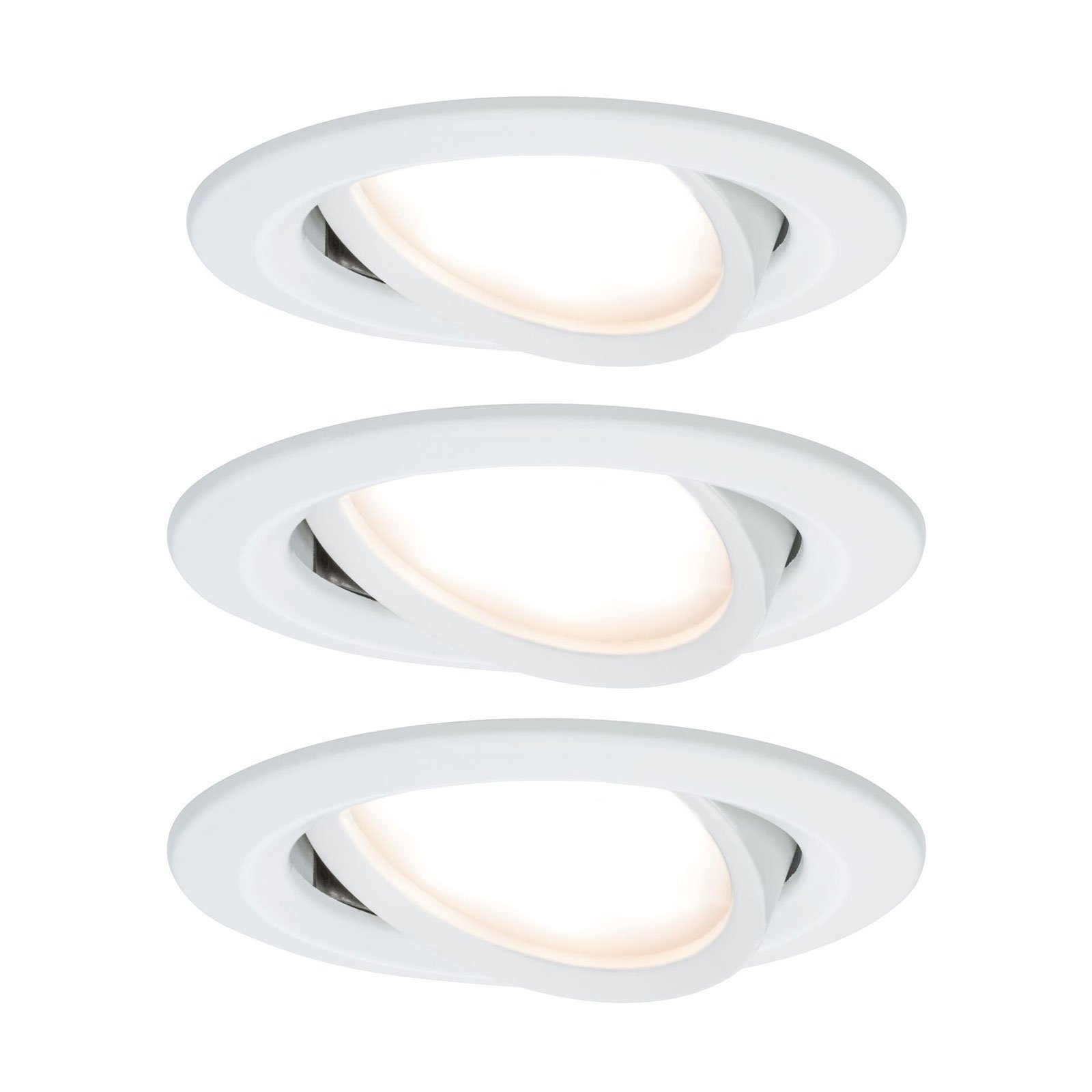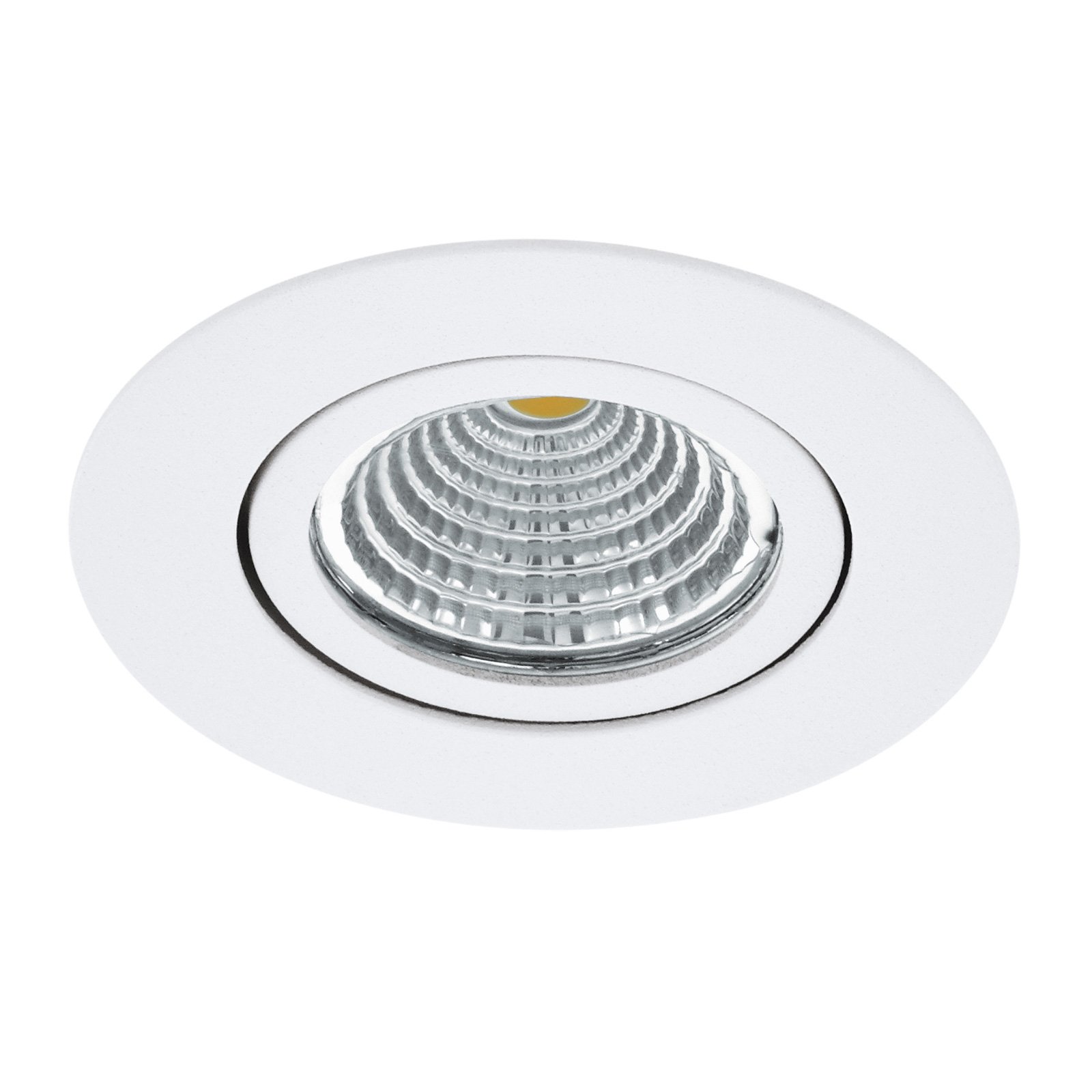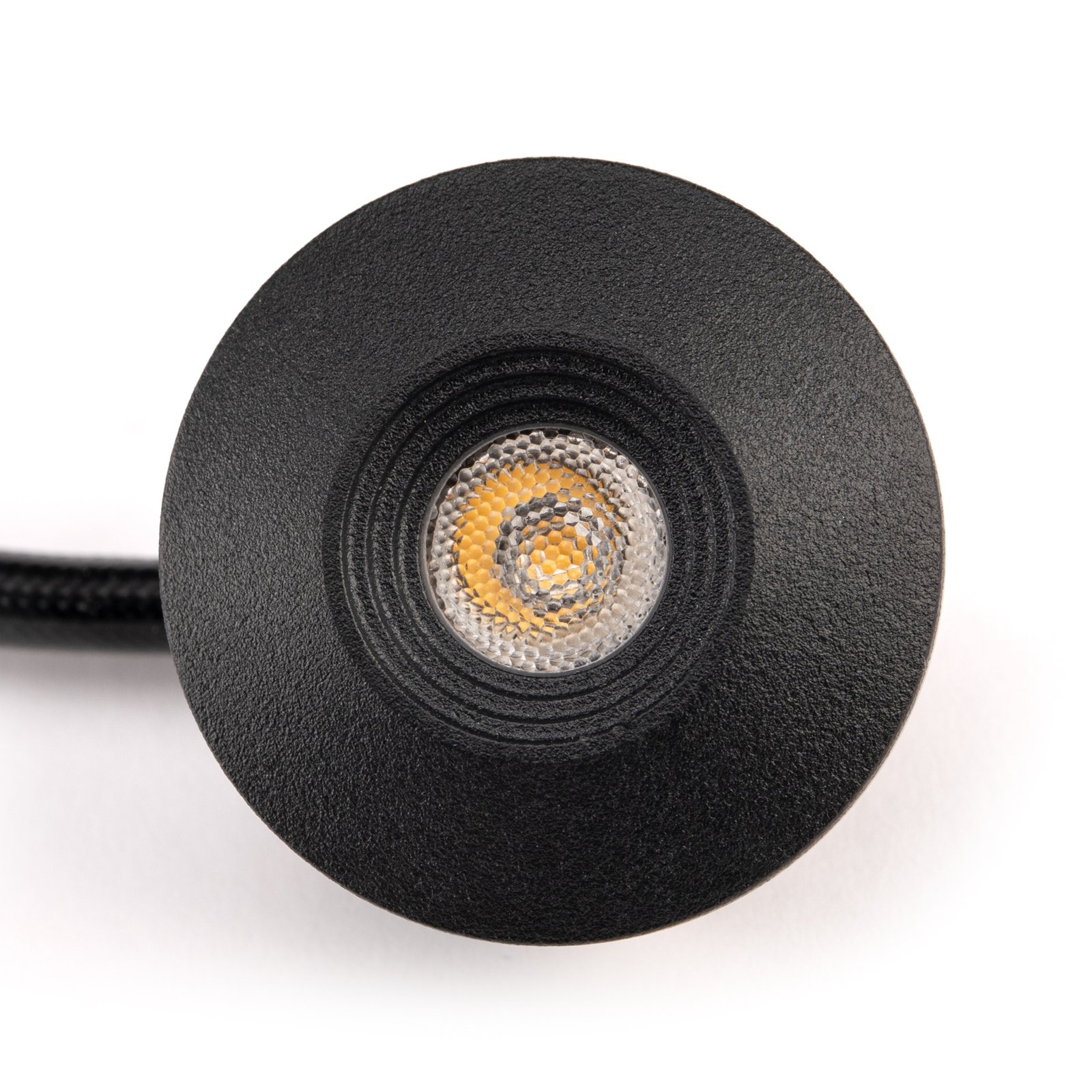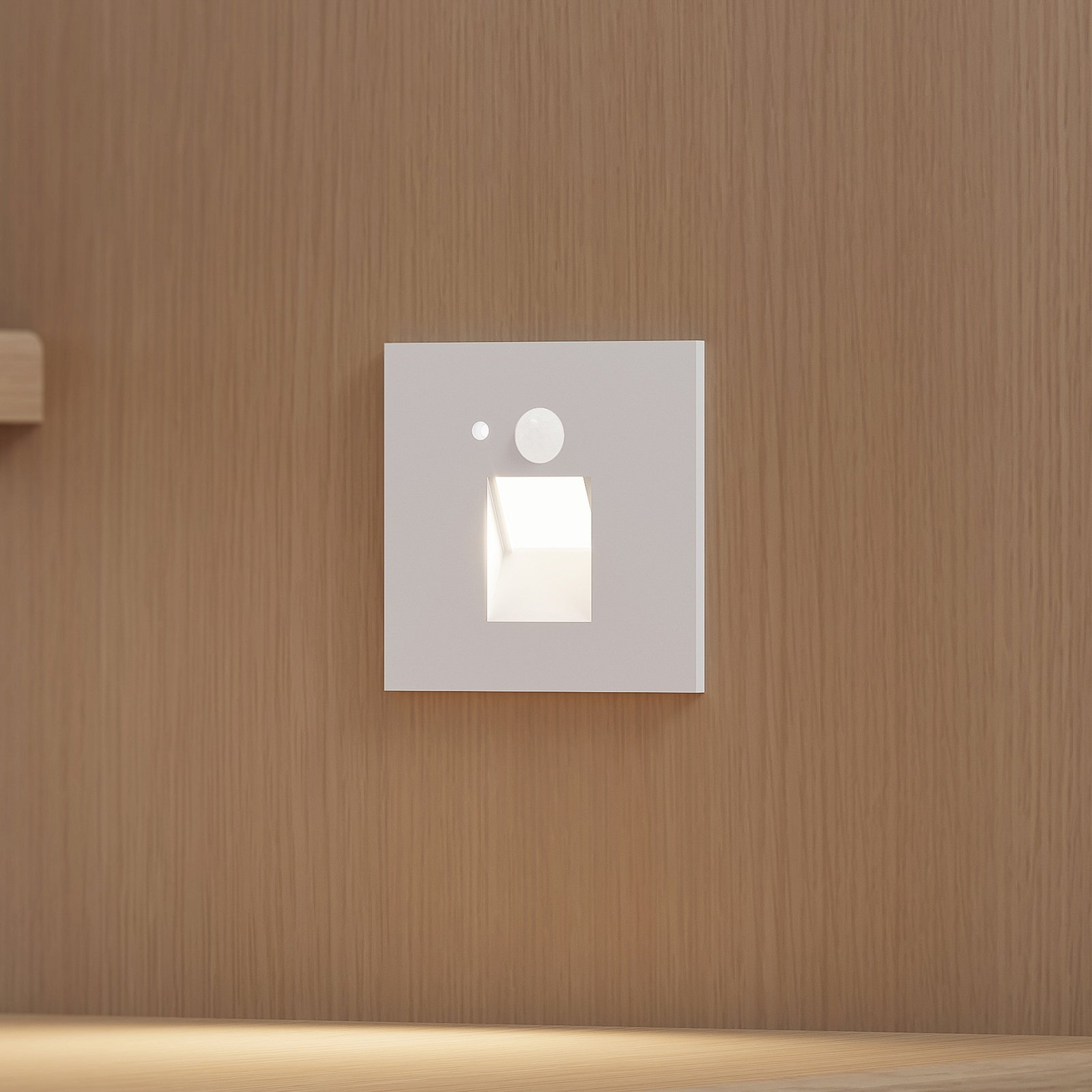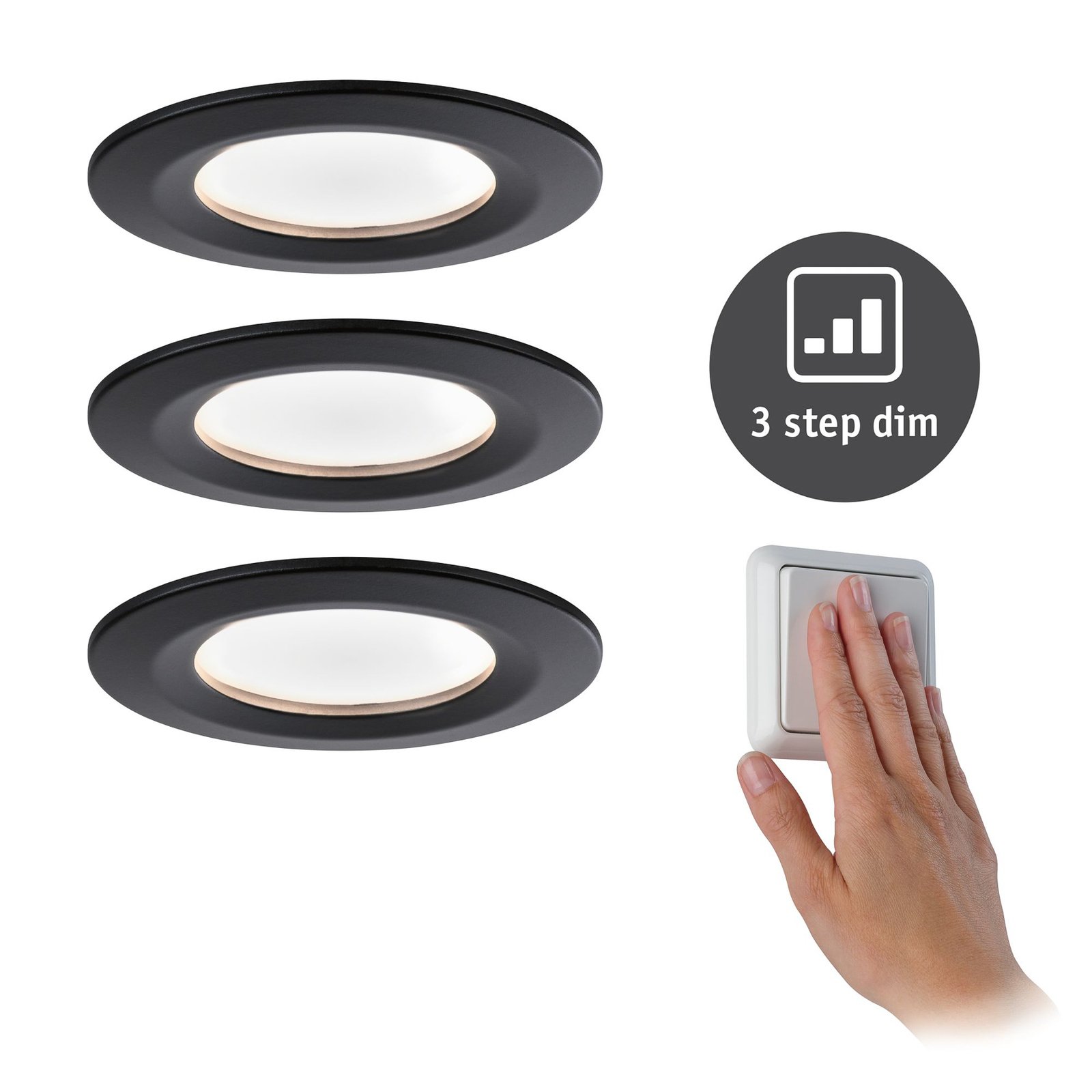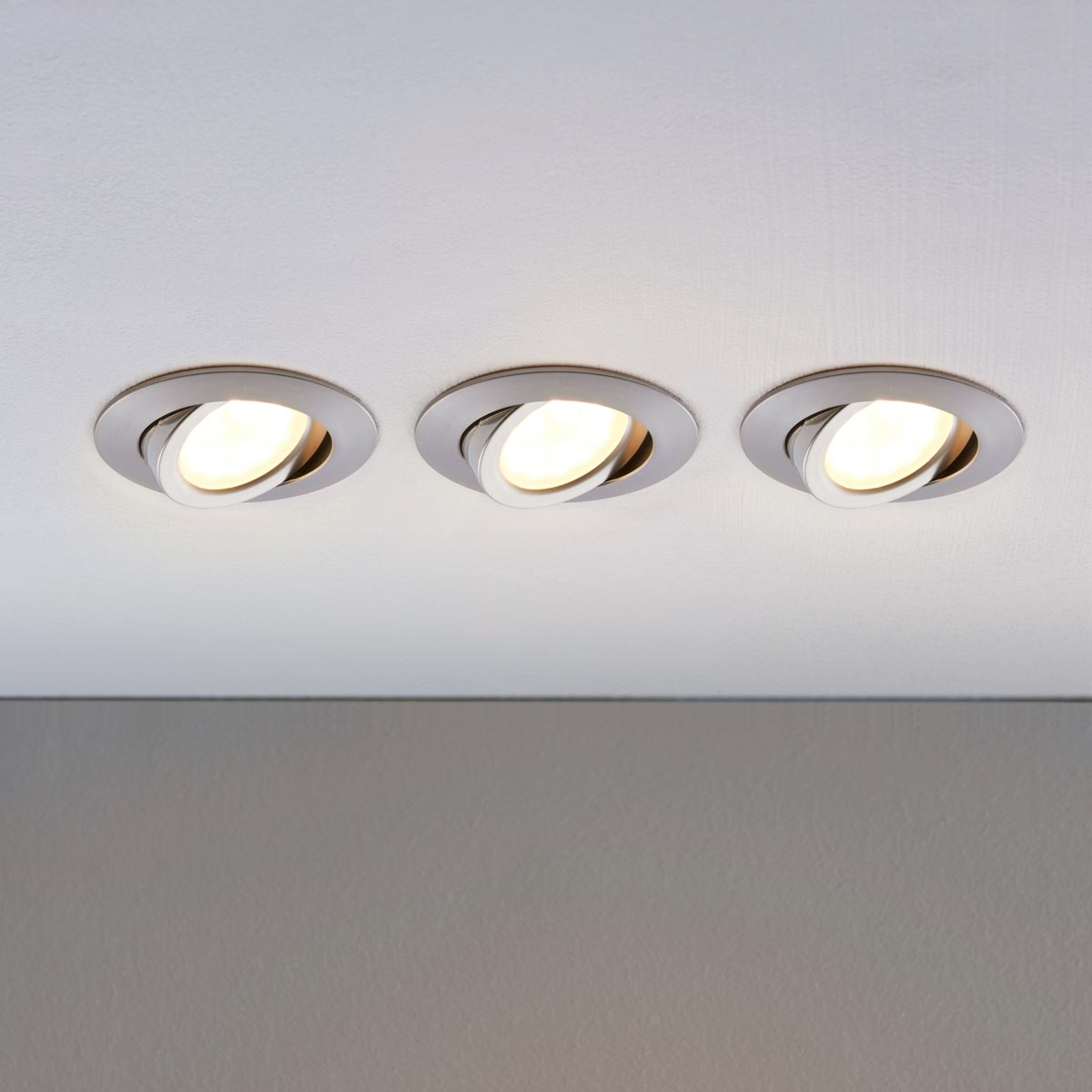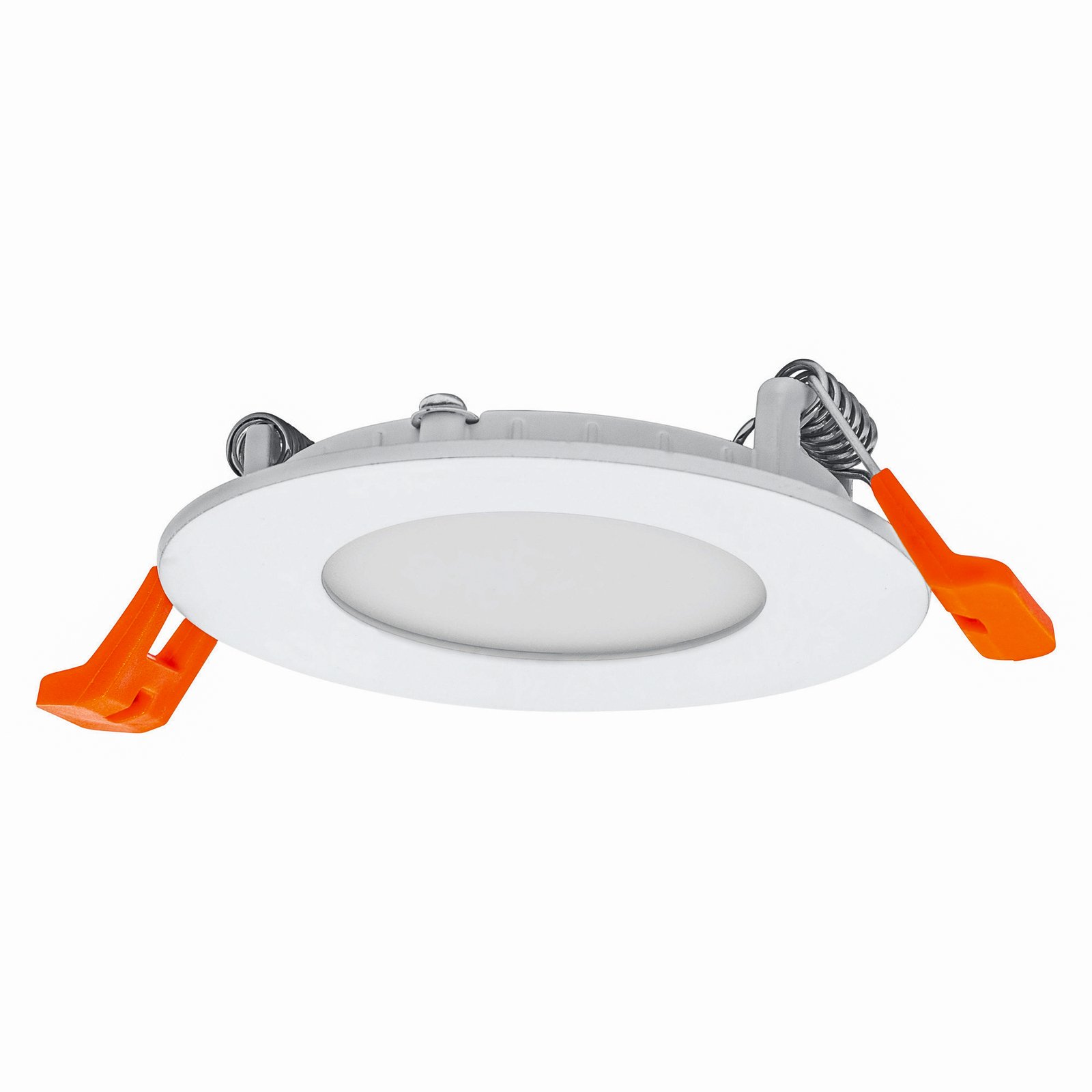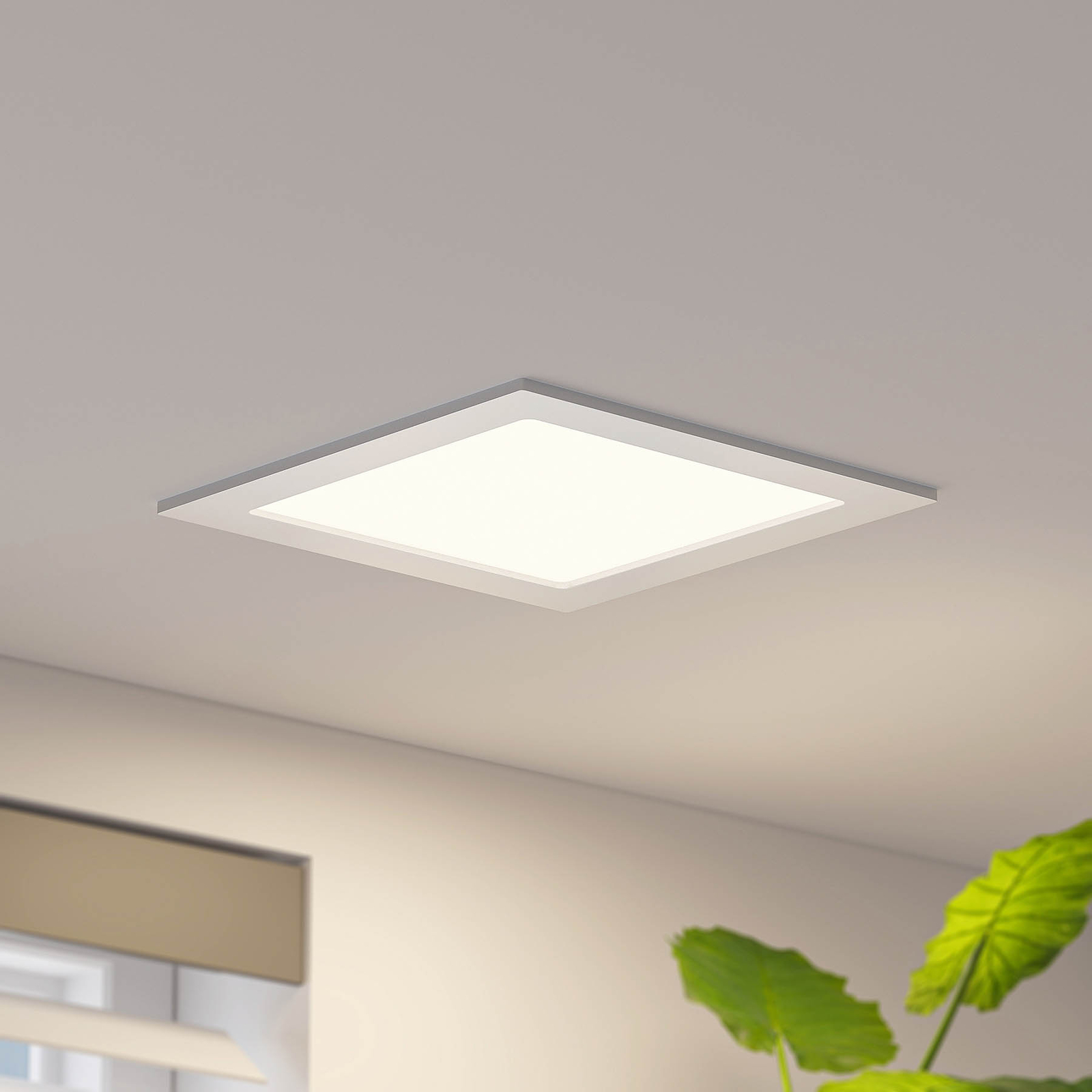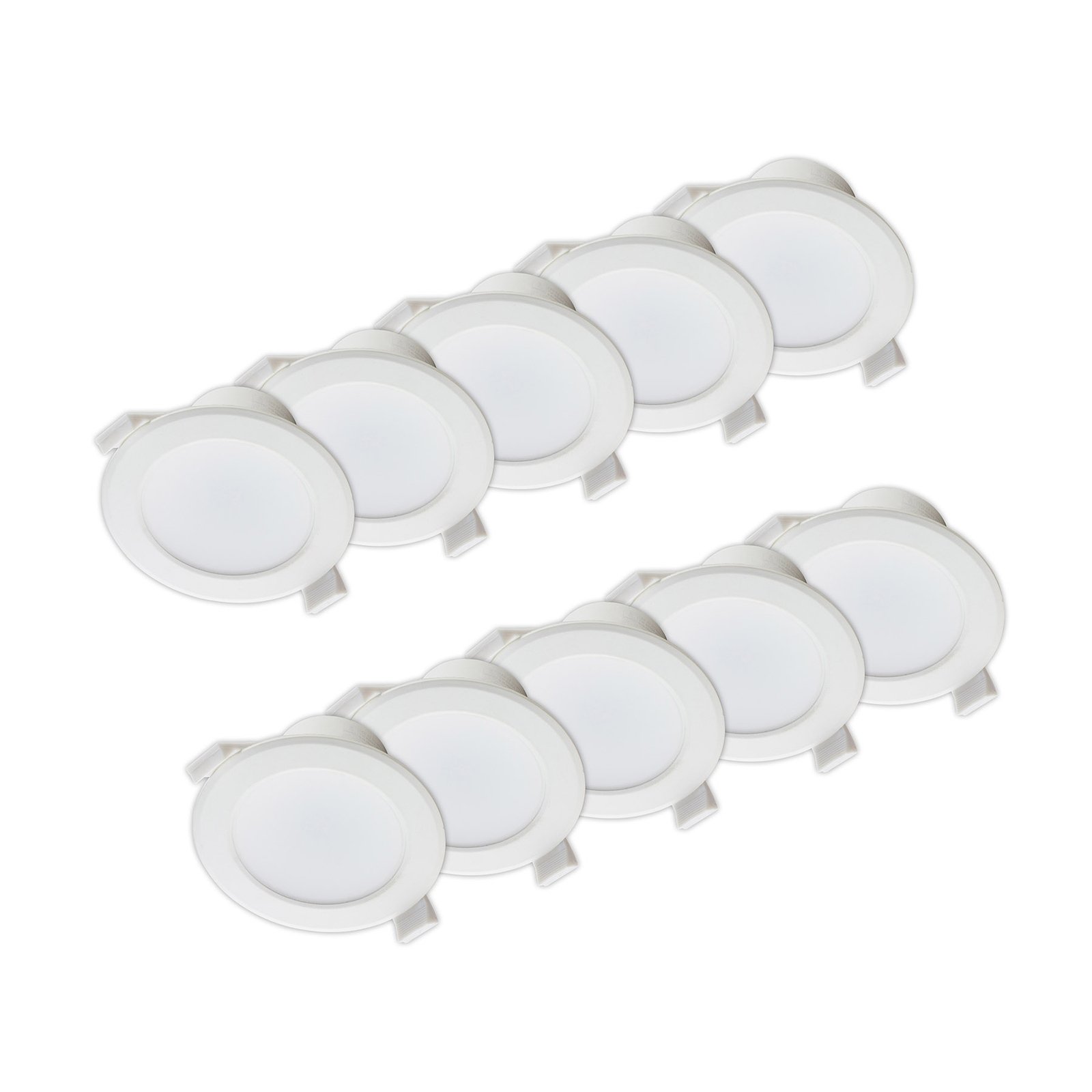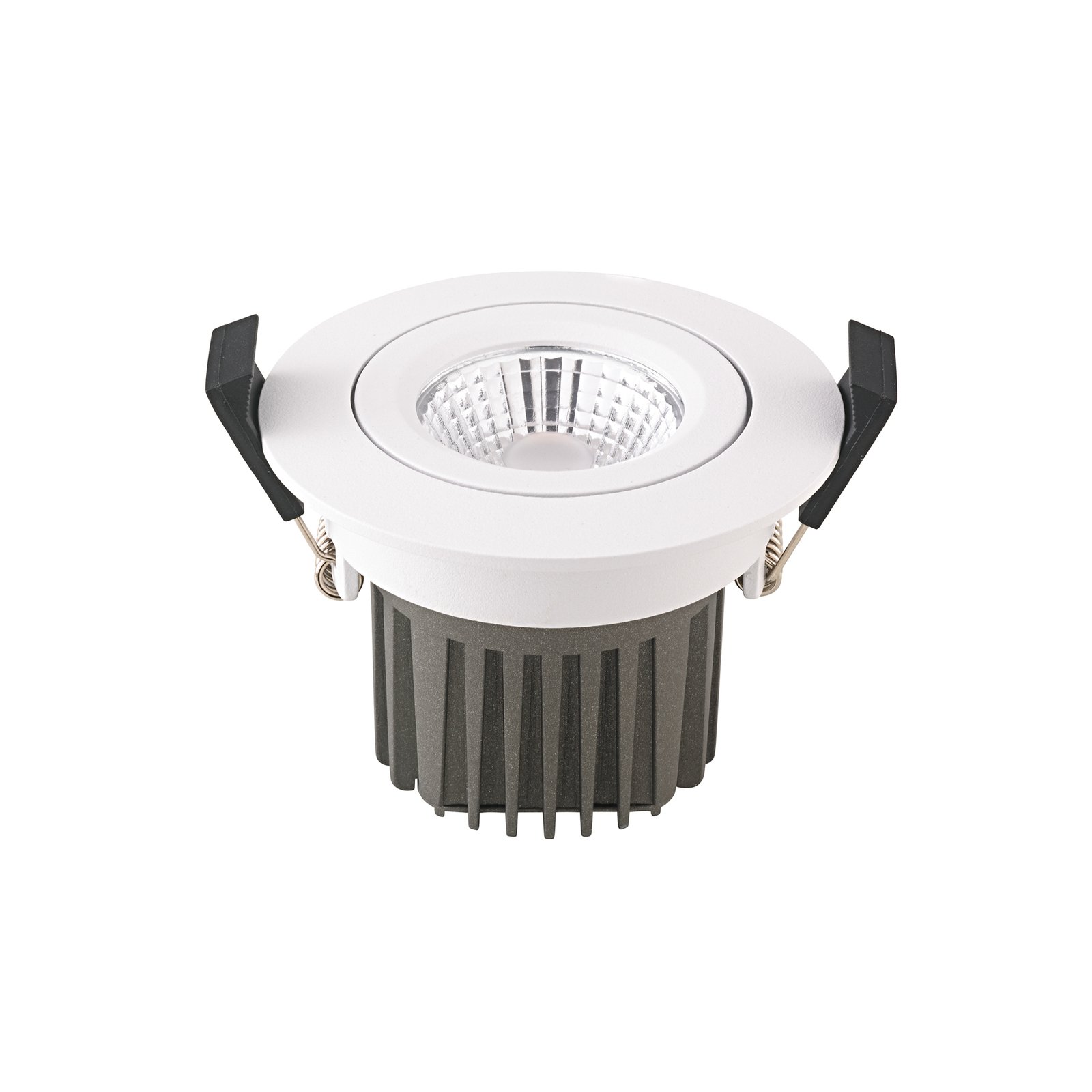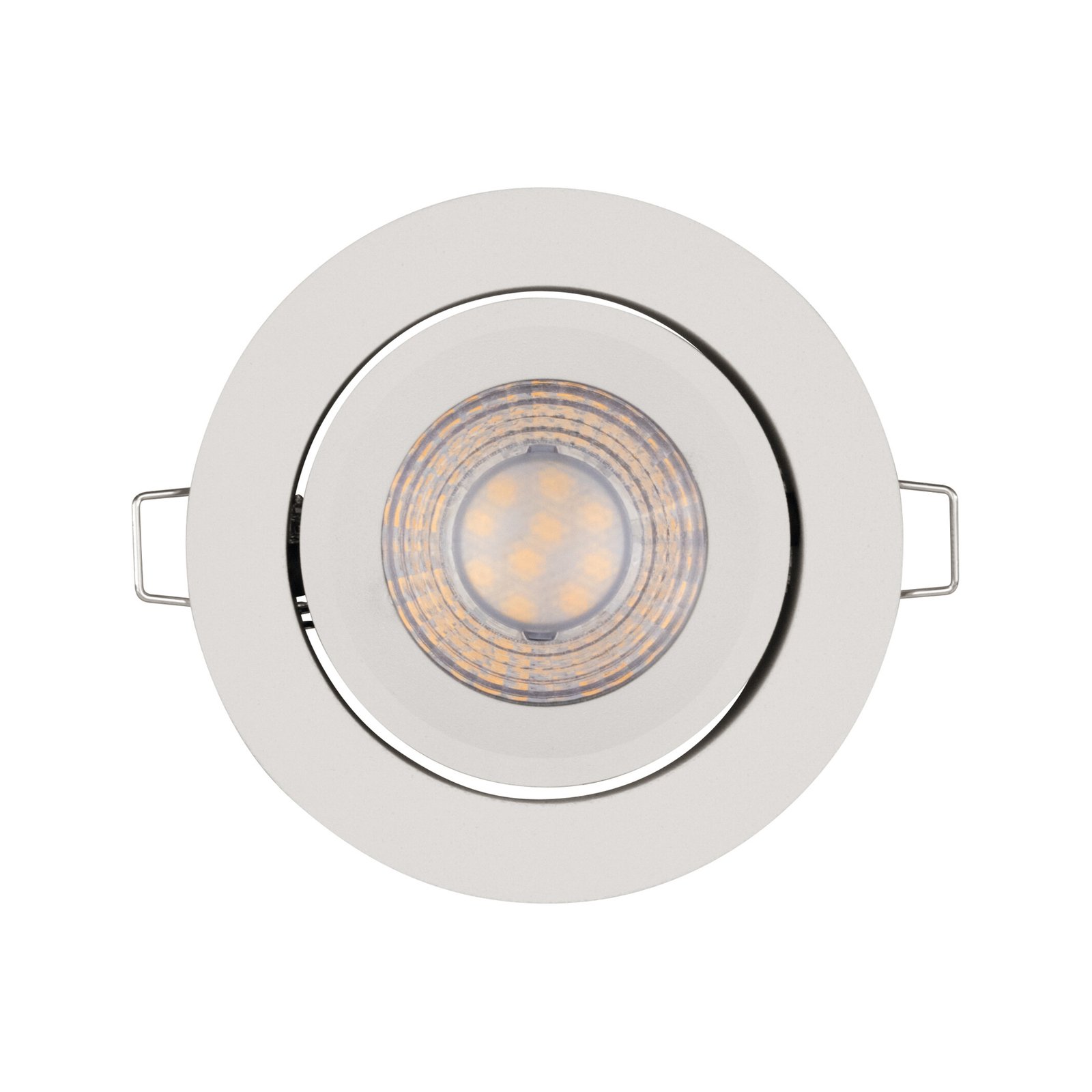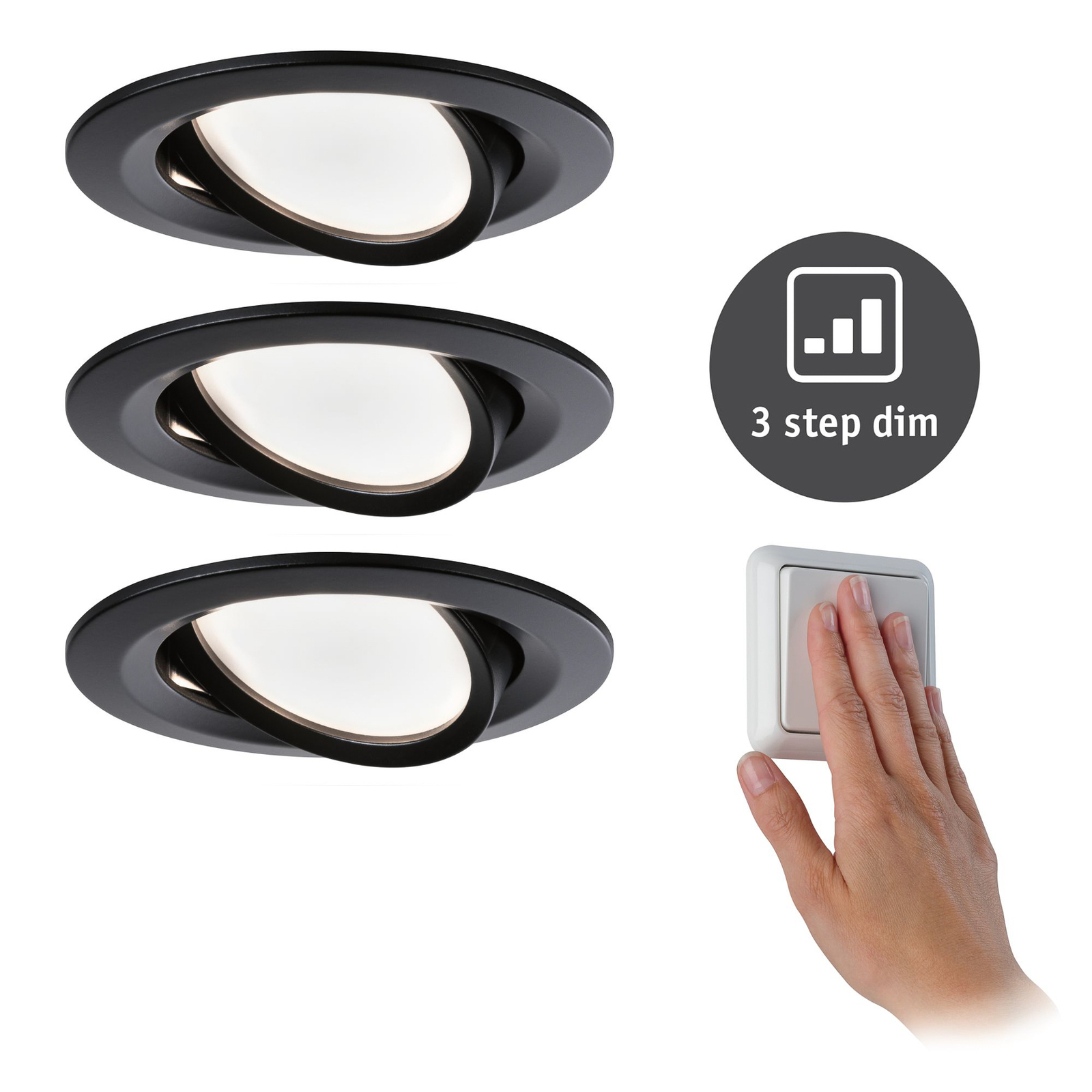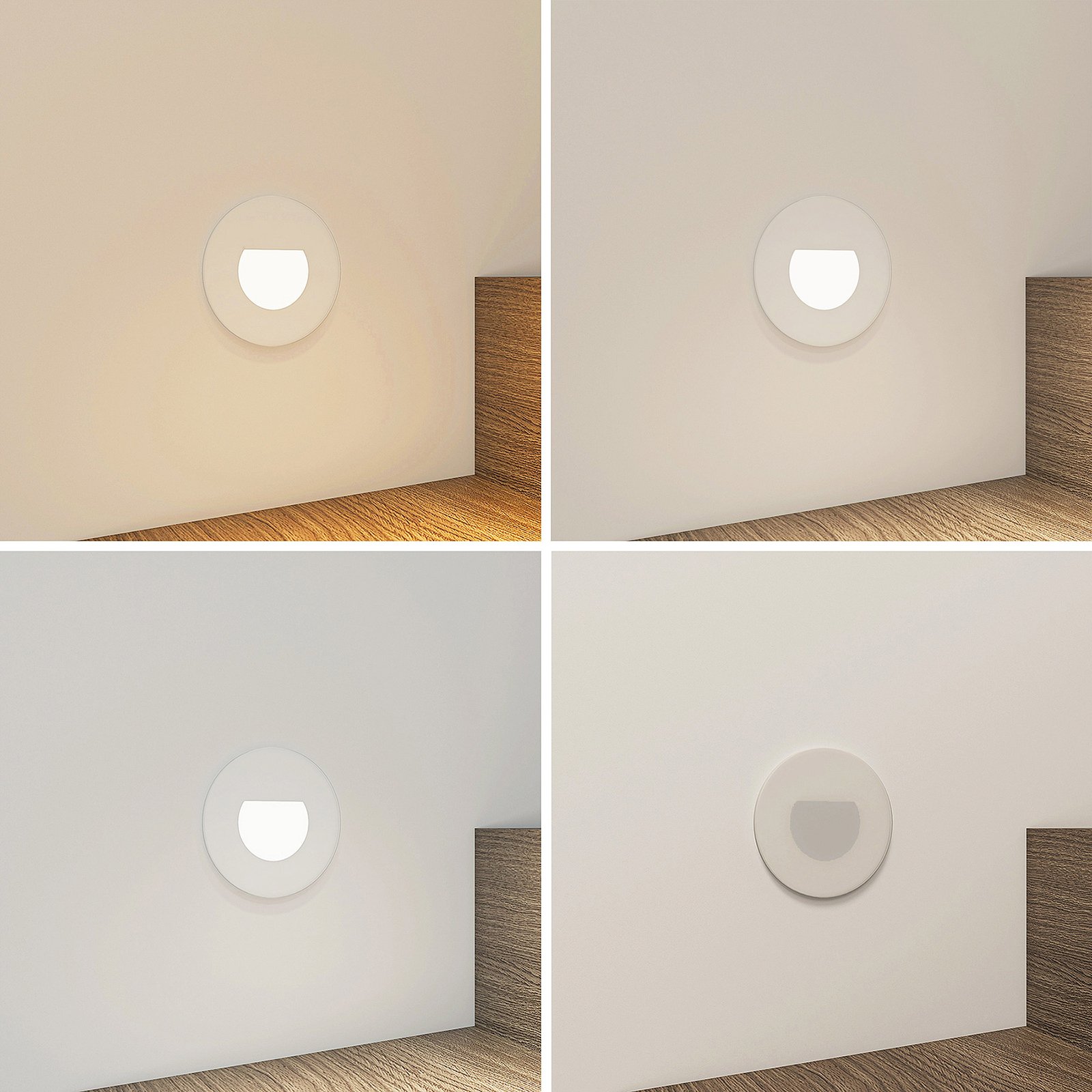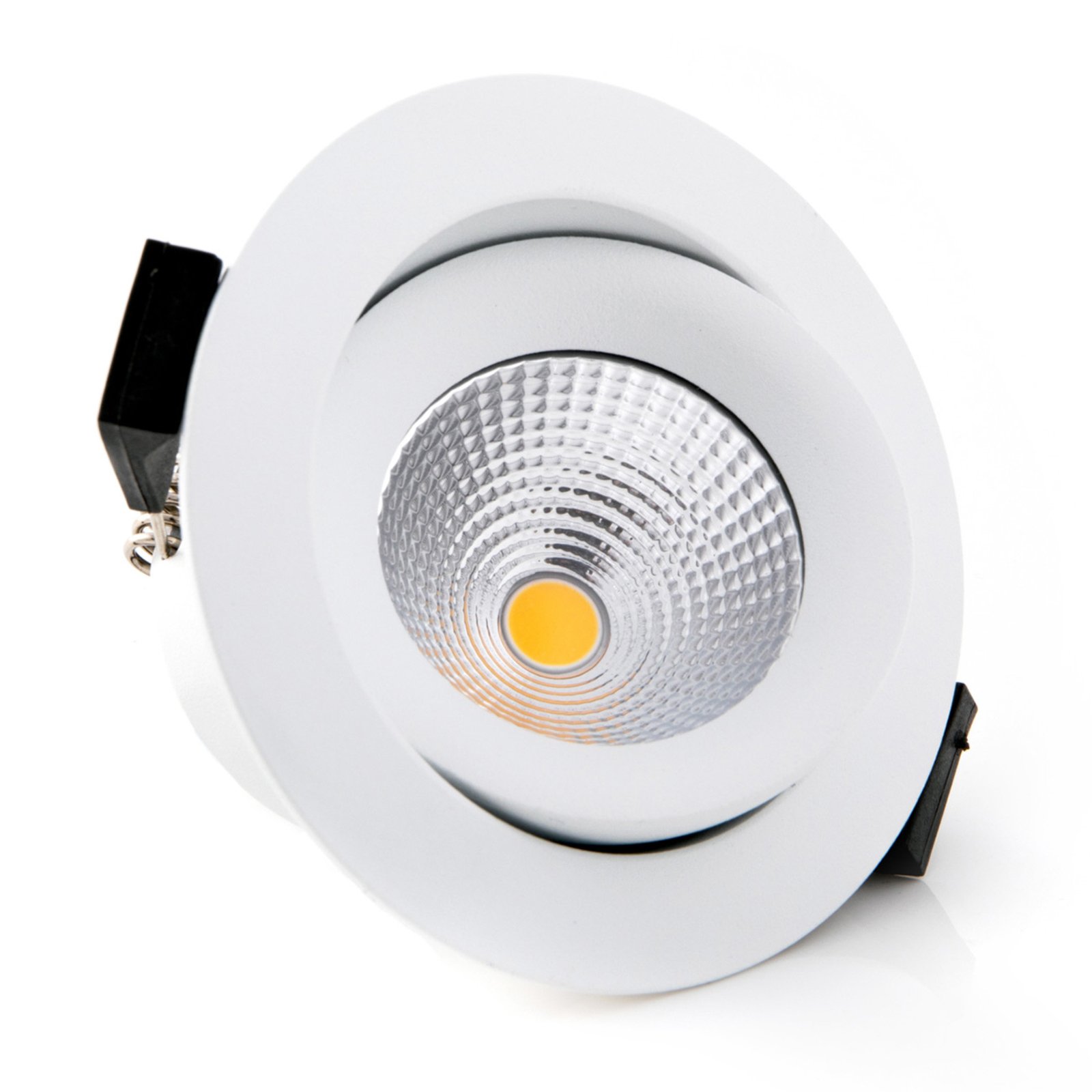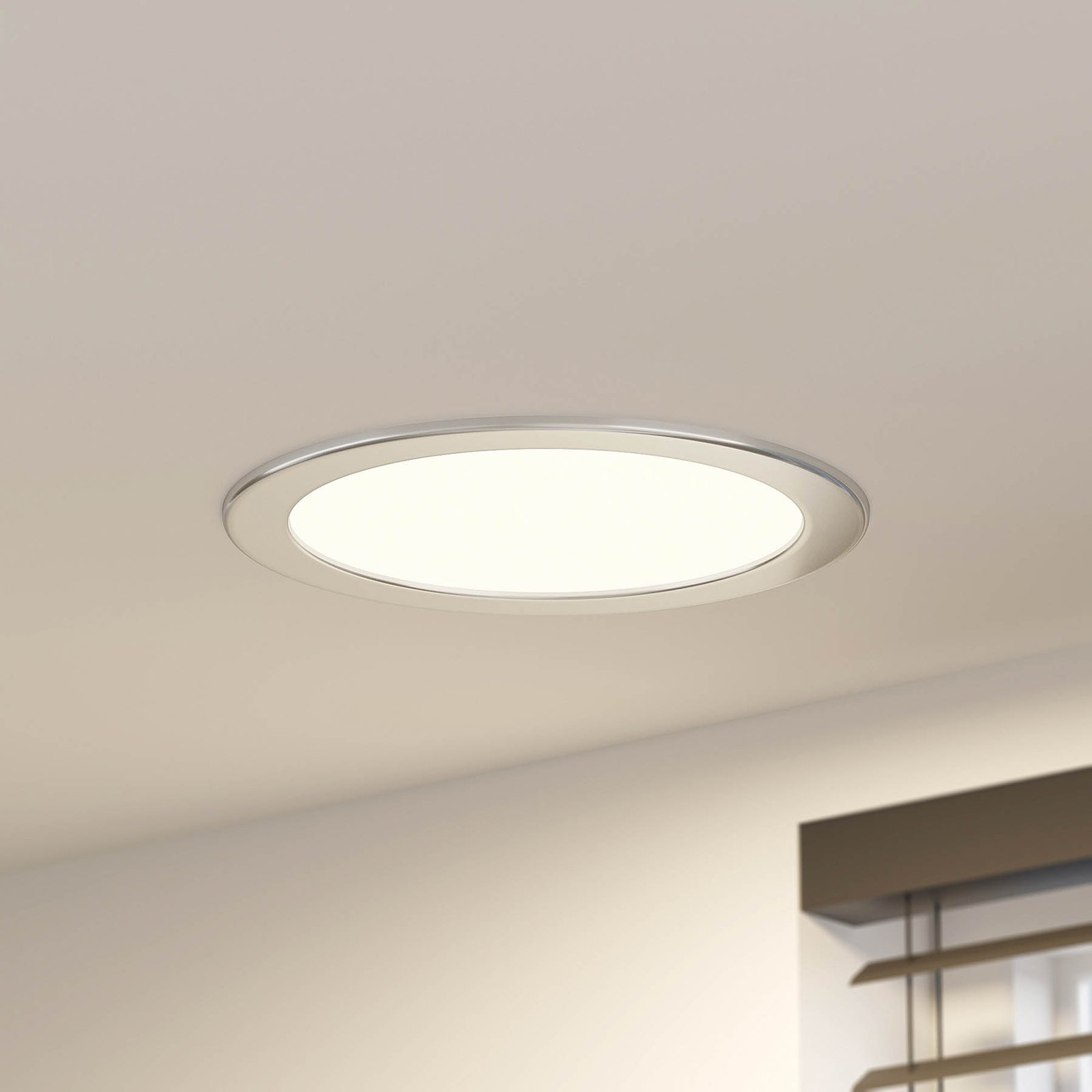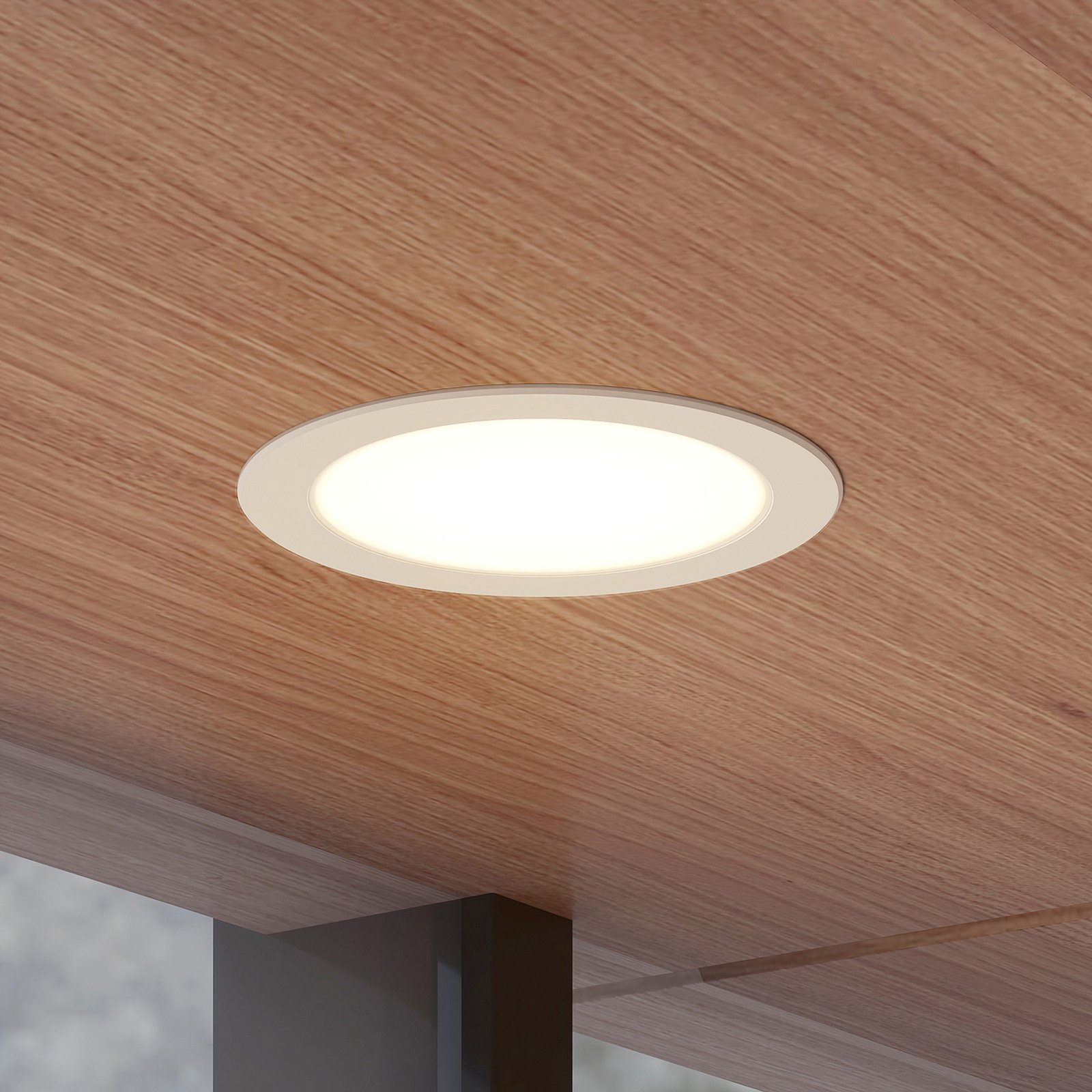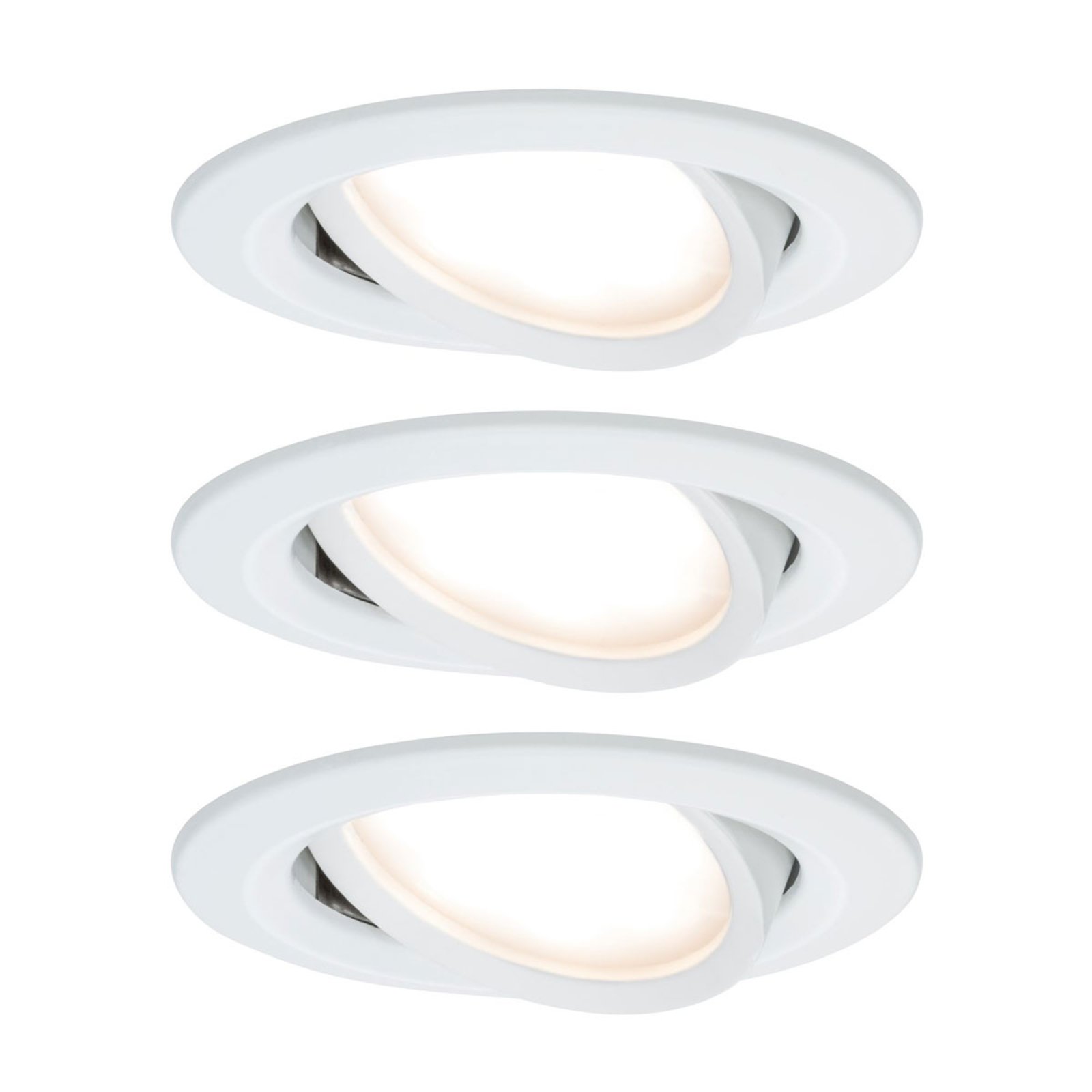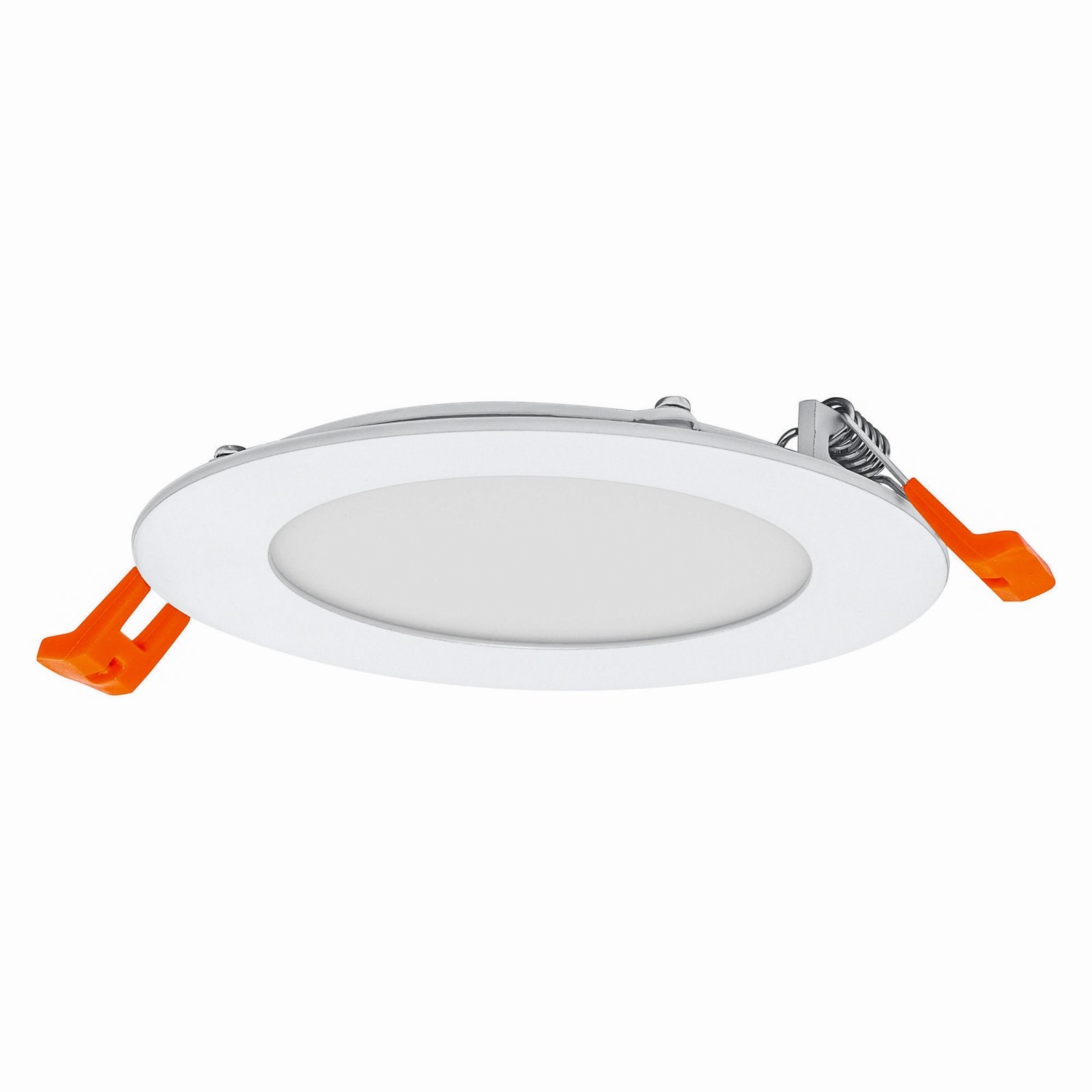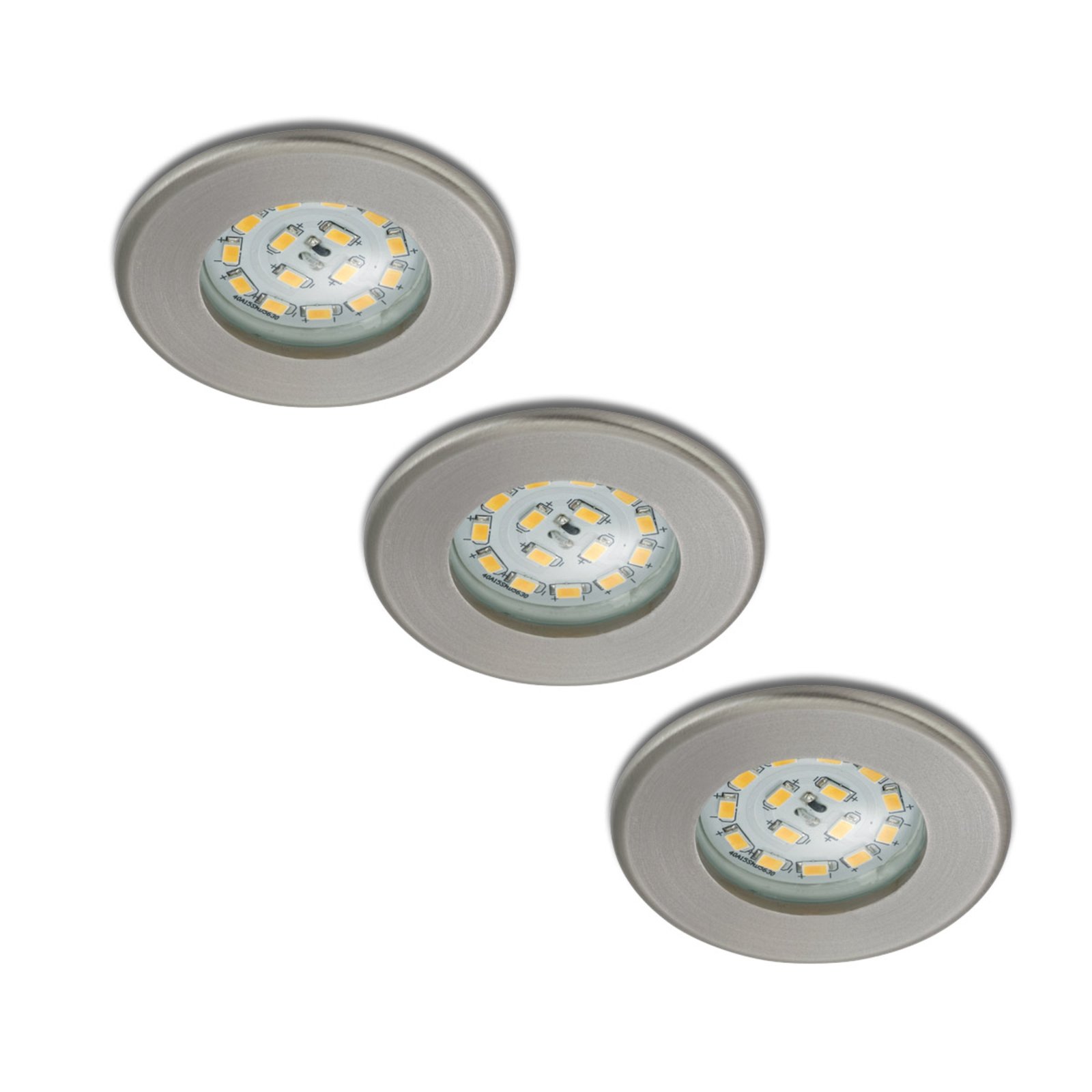- 50 days free returns
- Flexible payment options
- Europe's largest selection of brands
LED Downlights - The Key to a Perfectly Lit Room
LED downlights reduce lighting to the essential and are, on top of this, a benefit to your wallet and the environment. Find out all this modern type of lighting in our guide.
What to bear in mind when buying LED downlights?
Before buying LED downlights, think carefully about what exactly you’re looking to achieve. When you are building a new house or renovating your existing home, consider your lighting concept early on too - inserting led downlights at a later time may be more complicated; and where complications begin, the fun usually ends!
Distinguish between two objectives:
Illuminating a room entirely – here, of course, a number of LED downlights are required, ideally a whole set or more.
Creating targeted accent lighting – individual LED downlights are the right choice in this case.
Set of LED downlights
When buying a set of downlights, the recessed spotlights are intended to be installed in the ceiling in one or more rows. The individual spotlights are generally fixed which means they cannot be rotated or pivoted after installation.
To put in a different way – a set of downlights takes on the function of lots of small ceiling lights, helping to save space which is especially useful in small rooms or rooms with low ceilings.
:format(jpeg))
Since several lights provide more balanced lighting than one individual, central light, LED downlights produce a pleasant balanced lighting concept.
Need some help with this? No problem. Get in touch with our specialist consultants. Their contact details are available below.
Individual LED downlights
Single LED downlights may be installed wherever you want to create a new island of light or highlight a certain object in a room.
If you’re a fan of flexible lighting solutions, we’d recommend choosing a rotatable and pivotable downlight from the outset. These can be aligned precisely to the nearest millimetre, even after installation.
:format(jpeg))
What distinguishes LED downlights from halogen downlights?
Here, the lighting technology makes all the difference. With an LED downlight, you can achieve 60 % energy savings in comparison to a halogen one. On top of this, build-in LEDs emit light for up to 50,000 hours, making them almost completely maintenance-free. Anyone who has climbed a ladder every few months to change twenty halogen spotlights in the hall will never want anything other than LEDs!
Here are a few things you should bear in mind when buying LED downlights:
The energy efficiency class. Savings generally start with energy efficiency class A. The more plus signs after the A, the better.
The colour temperature. In contrast to halogen downlights (the colour temperature is always warm white), you can now choose your preferred colour temperature. Warm white (around 3,000 Kelvin), for example, is the right choice for any rooms where you want to have a cosy ambience, such as the living room and bedroom.
The colour rendering. Ra > 80 is a minimum; otherwise, colours are not rendered naturally. The closer the colour rendering is to one hundred (or if it is exactly one hundred), the better - especially if halogen bulbs have been used previously (they have a colour rendering of Ra 100).
:format(jpeg))
Which LED downlights go in the bathroom and the kitchen?
In the bathroom and kitchen, lights may come into contact with moisture and therefore, they need to comply with the requirements of the Ingress Protection Code (IP Code).
In the bathroom, the IP code is based on protection zones. In most cases, at least IP44 (spray water-protected) is required. In the shower or bath areas, the requirements are higher.
In the kitchen, IP20 lights are sufficient, apart from the sink area where IP44 or higher is required.
How do I install LED downlights?
First you need a ceiling opening and since a hole needs to be drilled for a recessed light, a cavity is required. Suspended ceilings provide this (information regarding the diameter of the light and installation depth can be found on the respective product details page). Connect the downlight first, then press the light into the hole.
We always recommend that you have the light installed by an electrician. Your safety is paramount to us!
:format(jpeg))
What should the light output of an LED downlight be?
To start with, light output needs are individual and always depend on the application.
Get a rough idea of the required light output as follows: think of how many traditional light bulbs you would need to make a room bright, or to create an island of light. Three times 60 watts? Then you need a light output of around 2,400 lumens in the room. Five times 40 watts? Then 2,000 lumens is a good guideline value. Many LED downlights produce approximately 400 lumens. This corresponds to a 40 watt traditional light bulb.
Have further questions? Then contact our specialist consultants. If you have the dimensions of the room to hand, we’ll be able to discuss your individual lighting concept with you. Contact details can be found below.
Do LED downlights require a transformer?
This depends on the product. Some LED downlights have a driver integrated and therefore do not require an additional one. They can be connected directly to the 230 volt grid. However, there’re LED downlights that need to be supplied with an external LED driver.
Find out what you need for your preferred product in the product details.
Are there LED downlights with a small installation depth?
A suspended ceiling makes a room seem smaller. However, if you choose a slightly suspended ceiling, you will enhance the size of the room but have less space for the light. In this case, we recommend using downlights with a small installation depth of 3 cm or less. Information on the installation depth can be found in the product details of each downlight.
Please note: Don’t install your LED downlights directly in the insulation. Heat will build up, considerably reducing the lifespan of the product.
Have further questions about LED downlights? Call us on +353 1 699 2138 or get in touch via the contact form. We will be happy to help with your lighting project.
The strike-through prices correspond to the manufacturer's RRP.
Included in the price of LED lights/bulbs is a contribution to recycling costs of €0.05. Included in the price of CFLs/fluorescent bulbs is a contribution to recycling costs of €0.15.
All prices include 23% VAT, delivery costs excluded.






































































